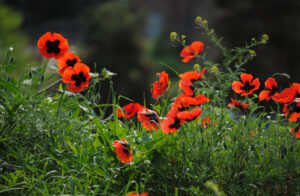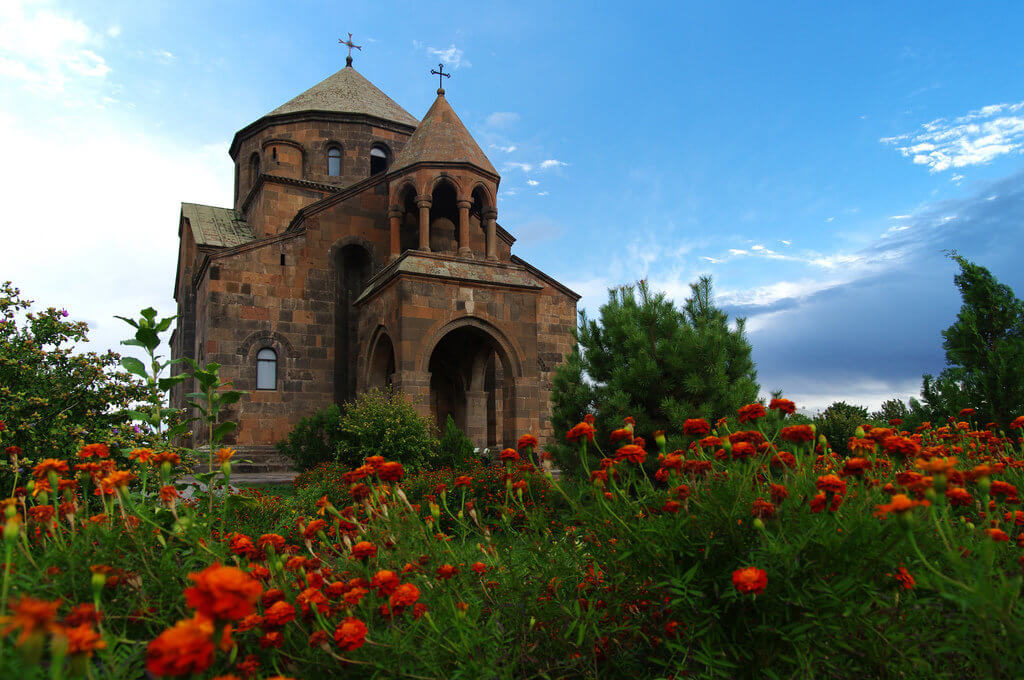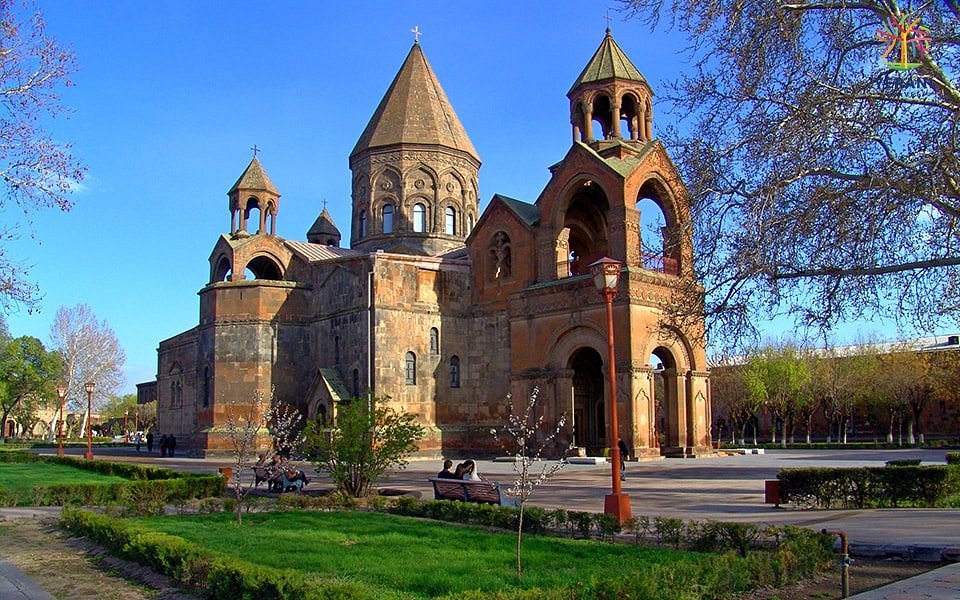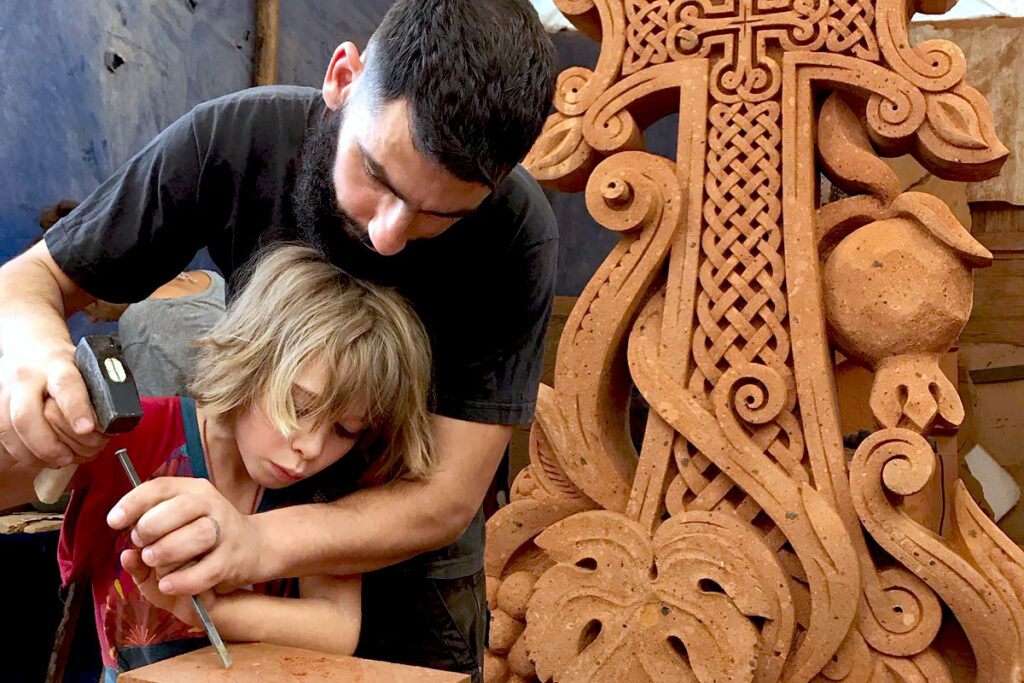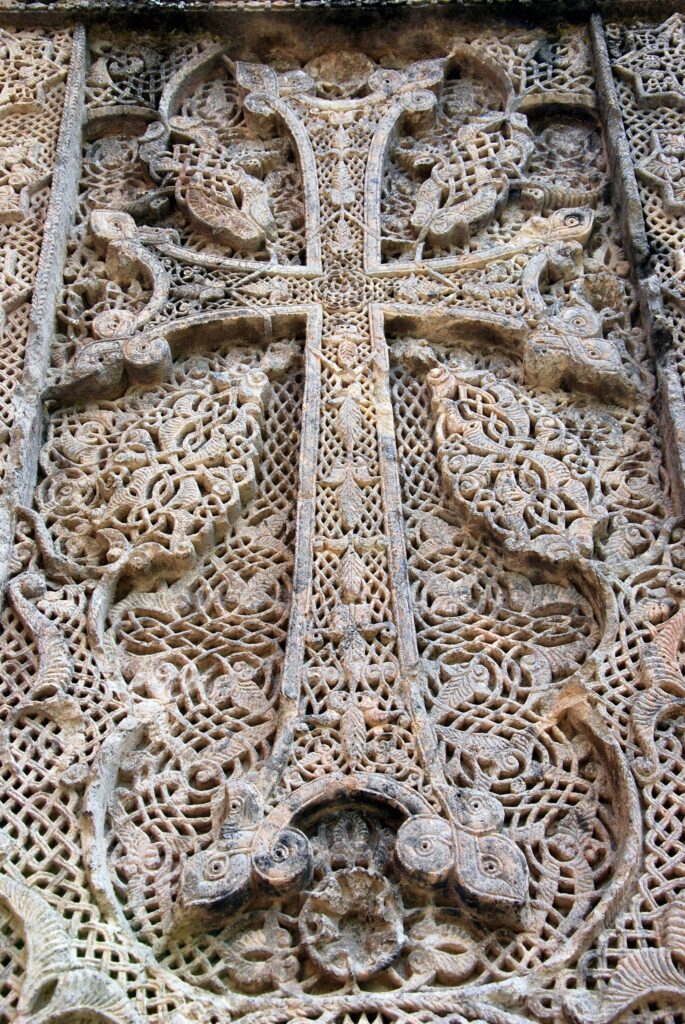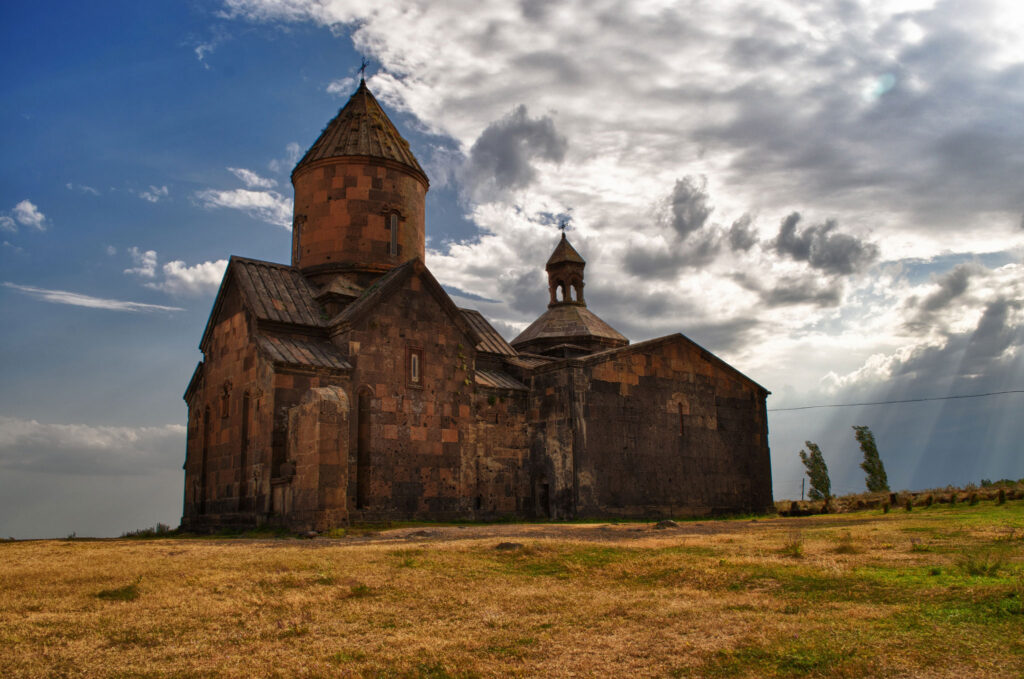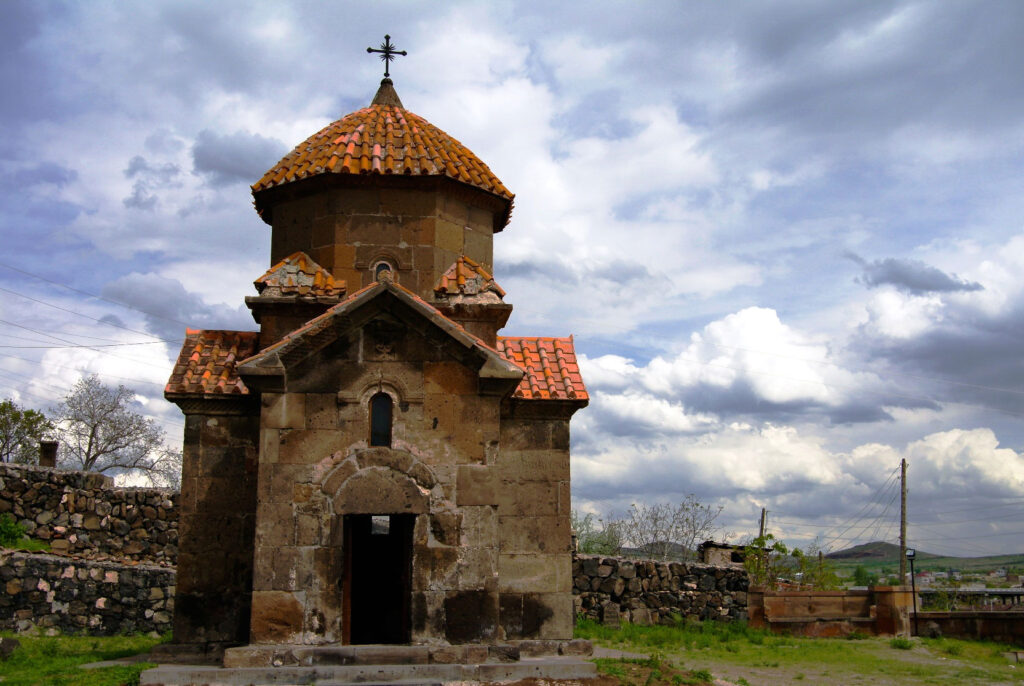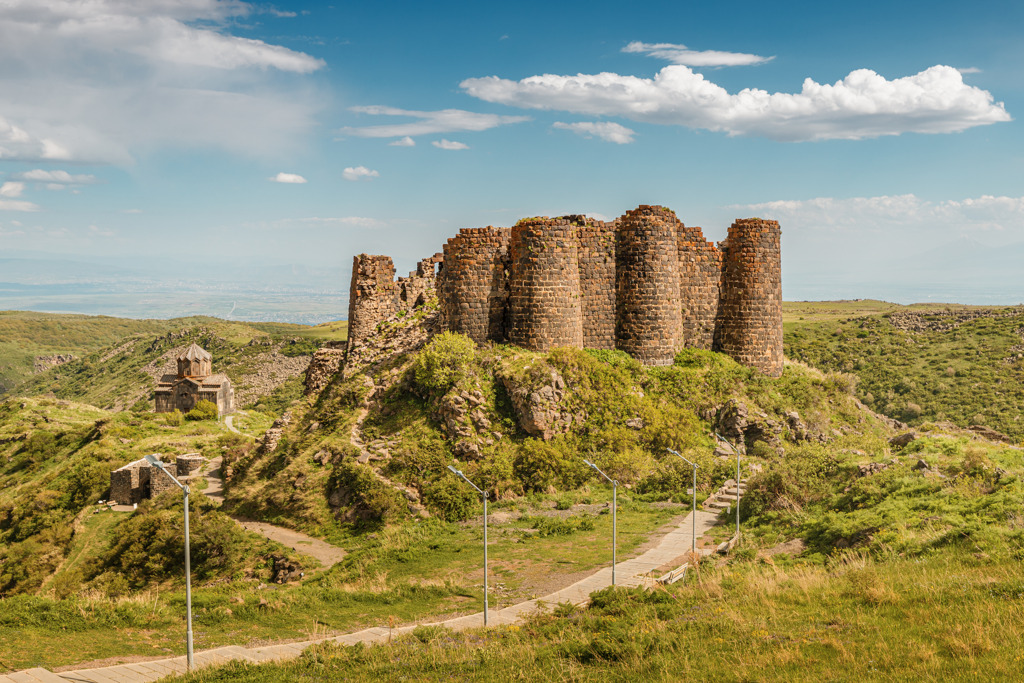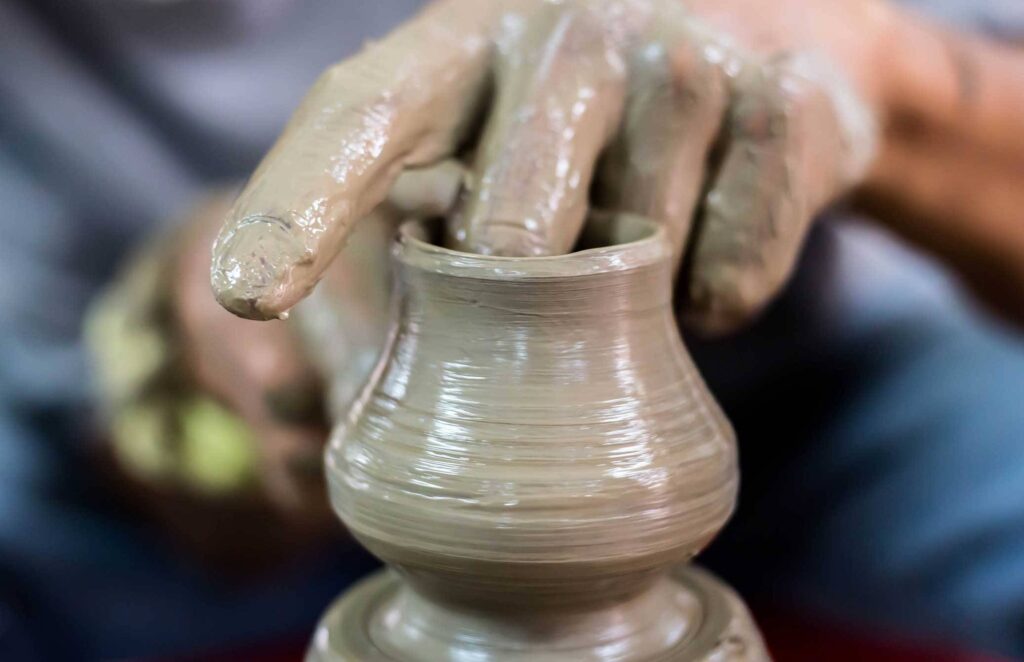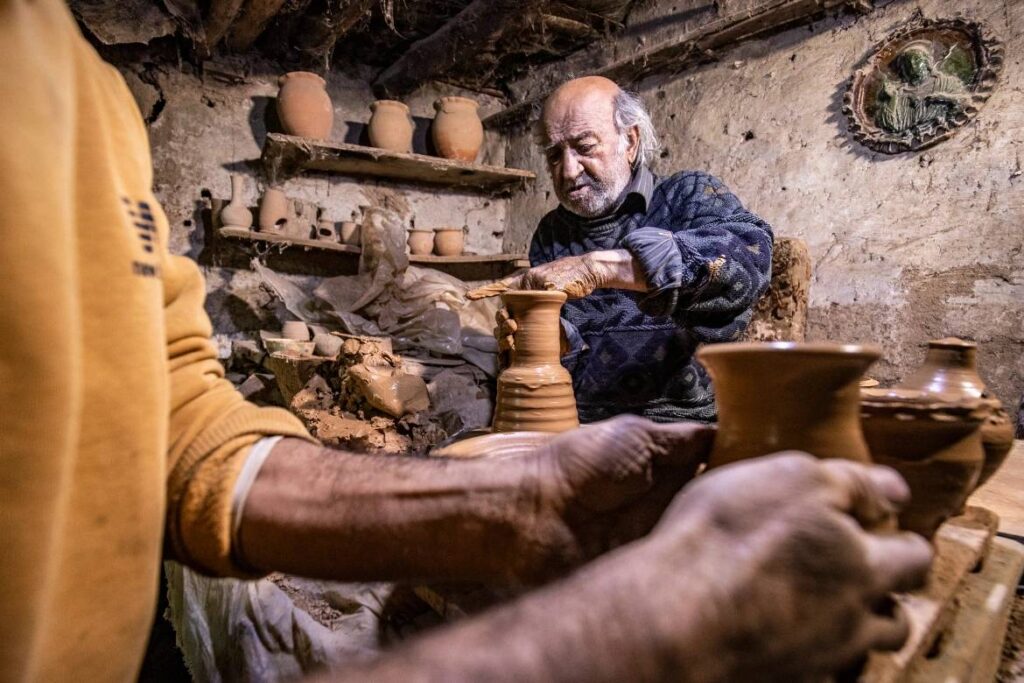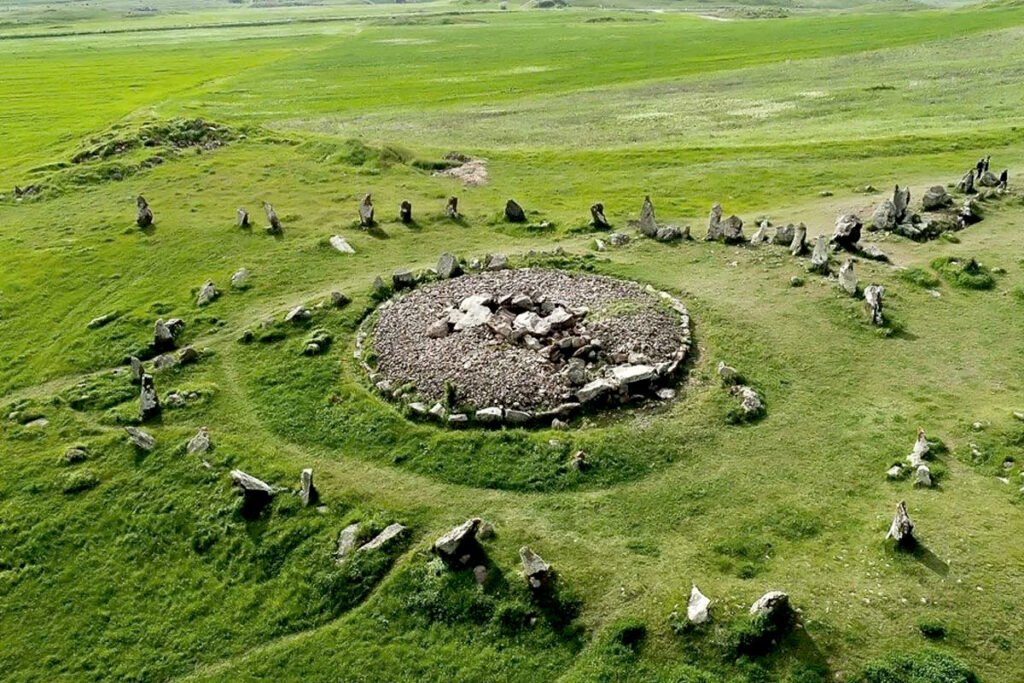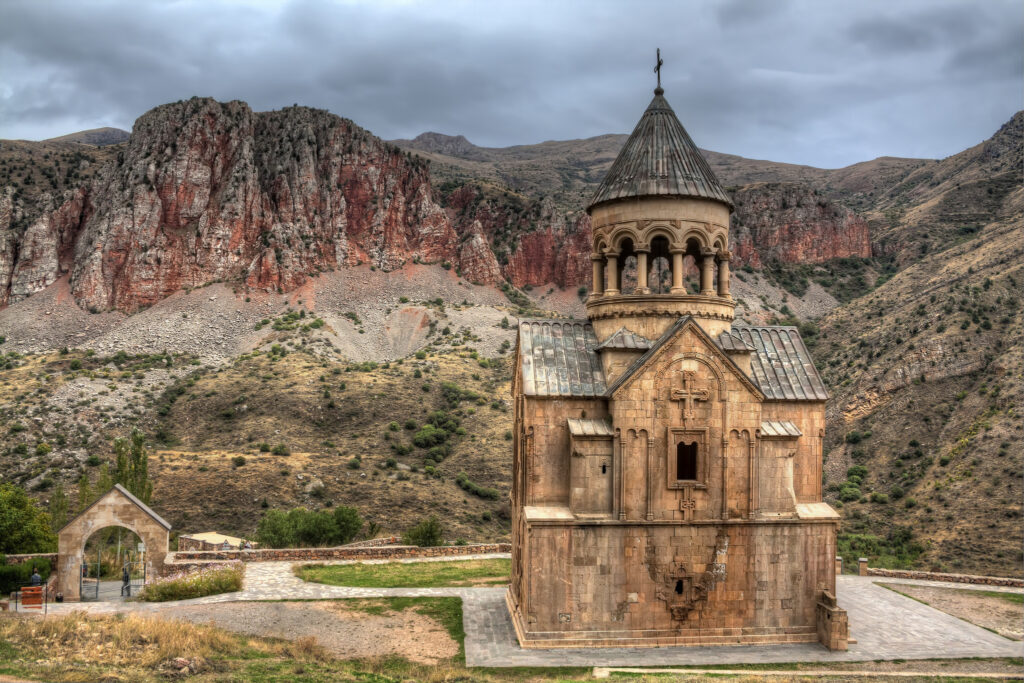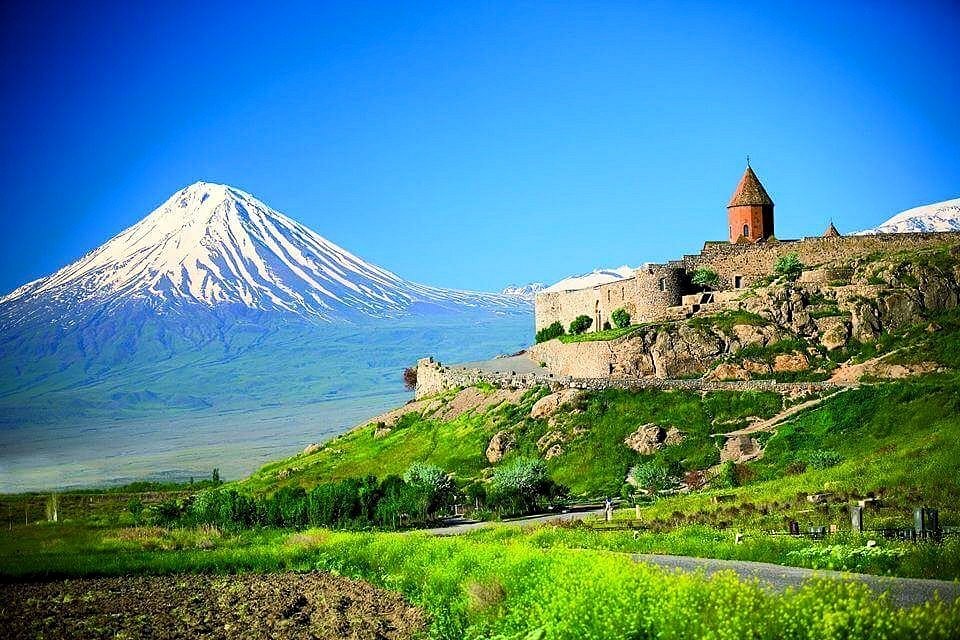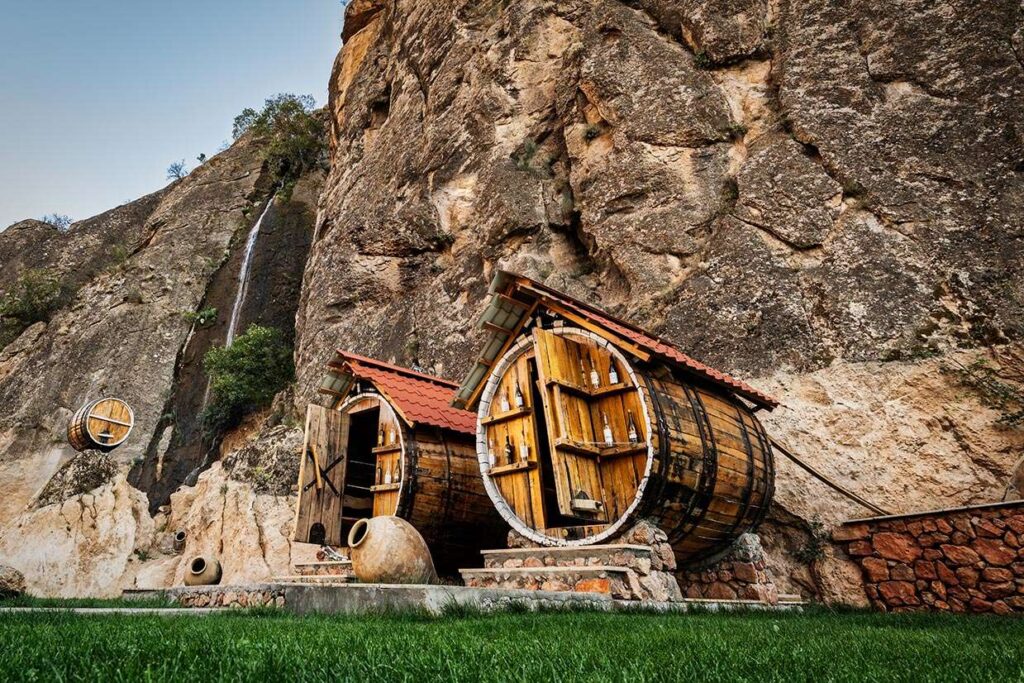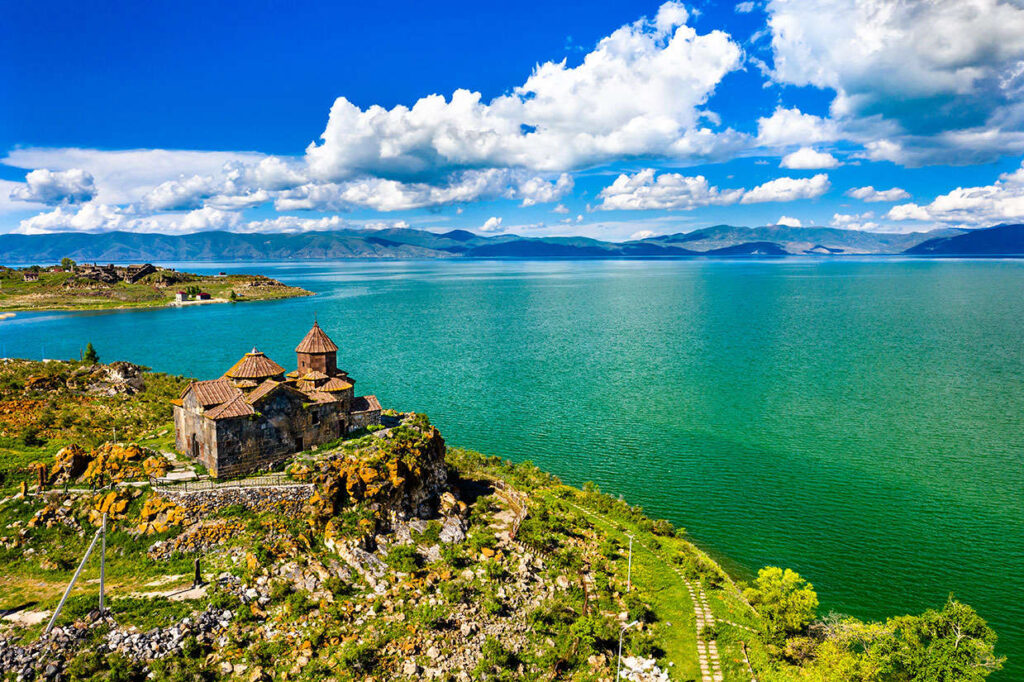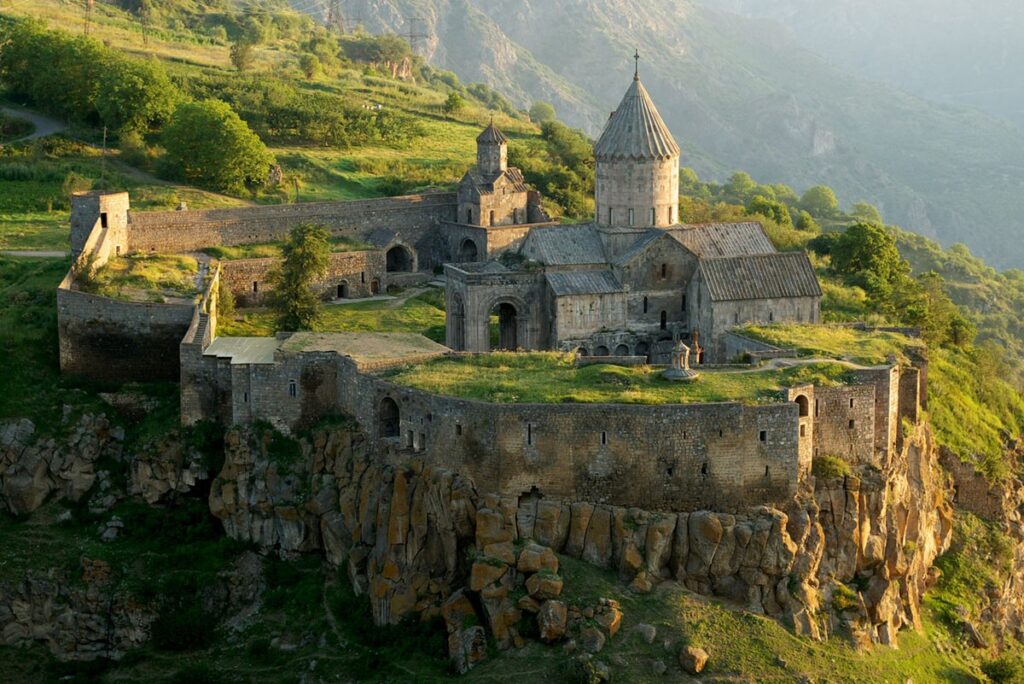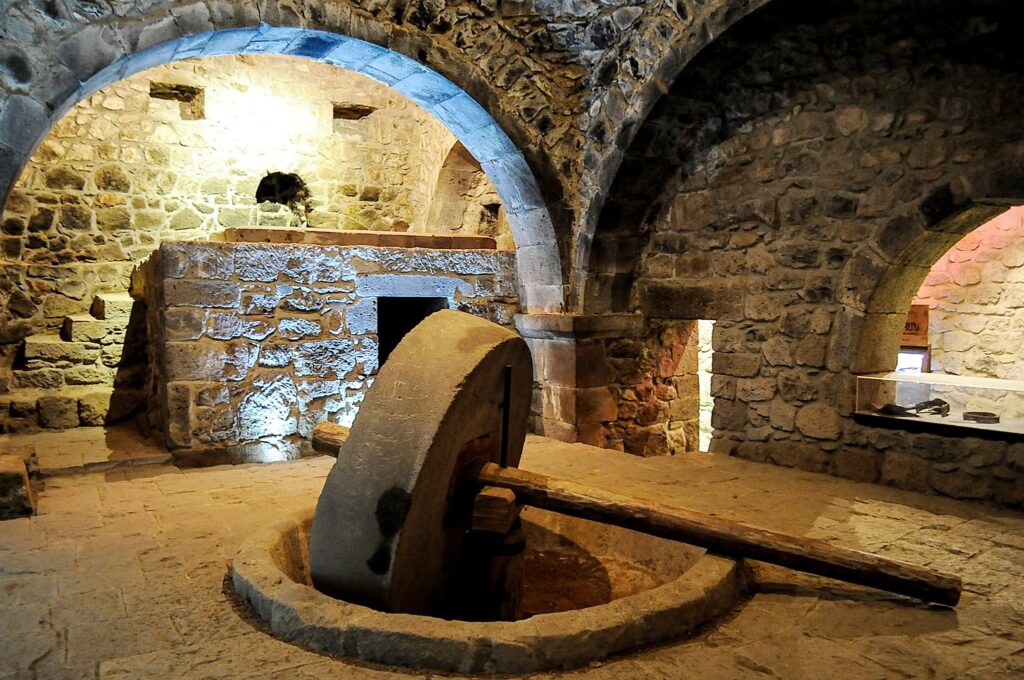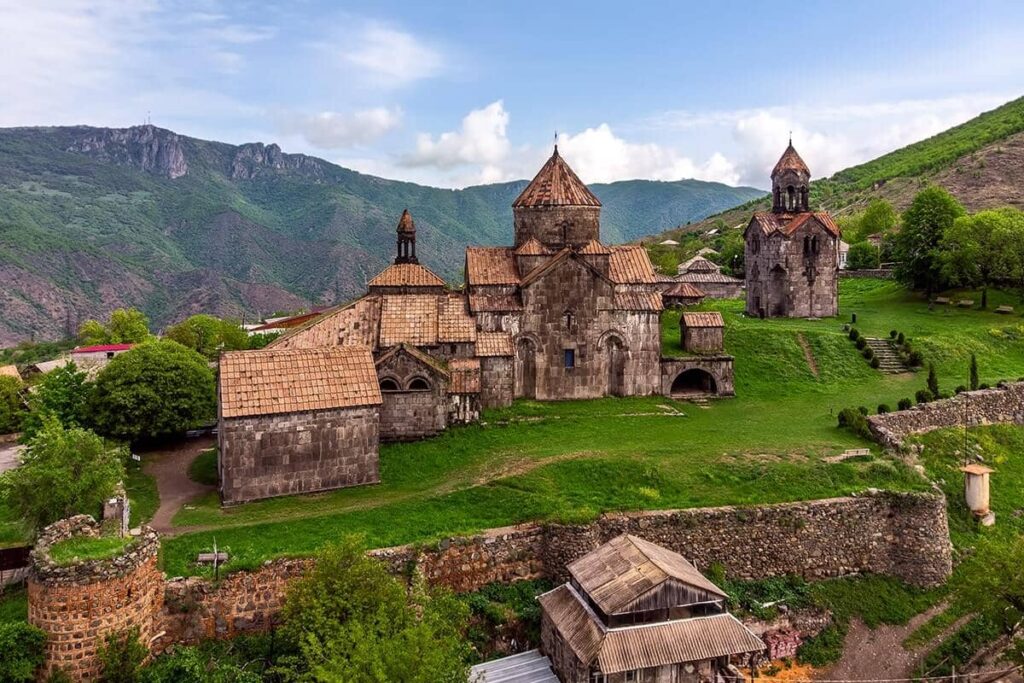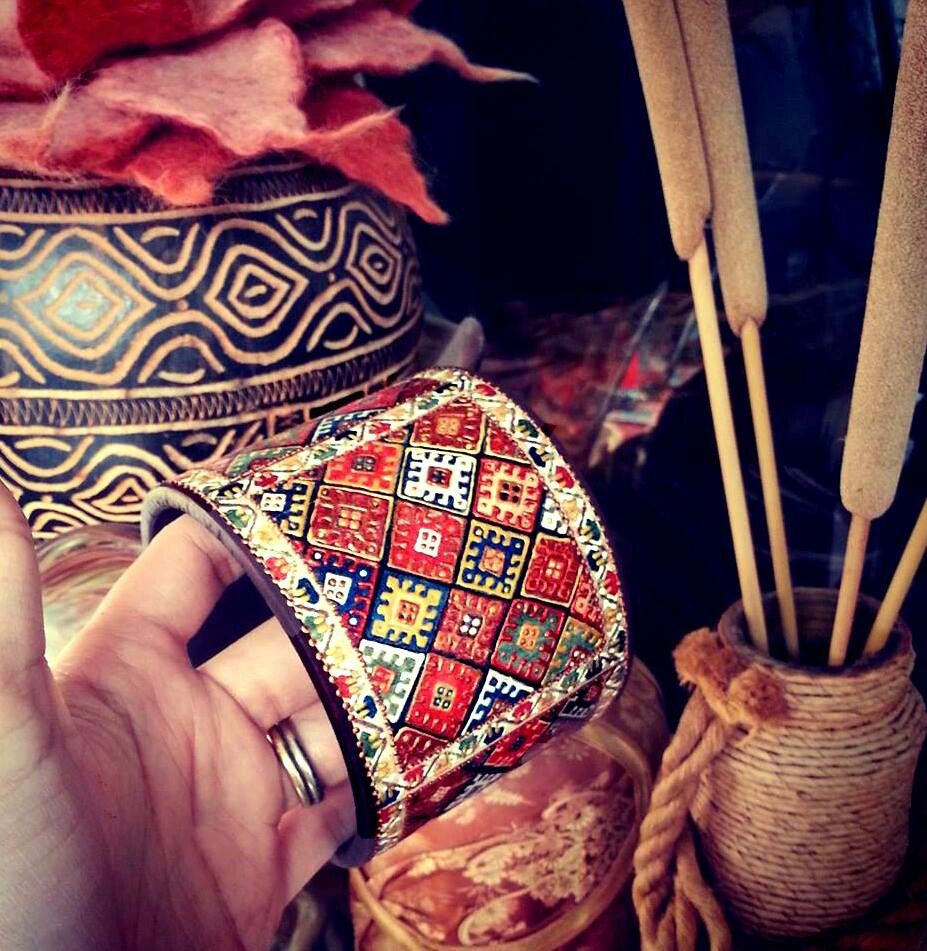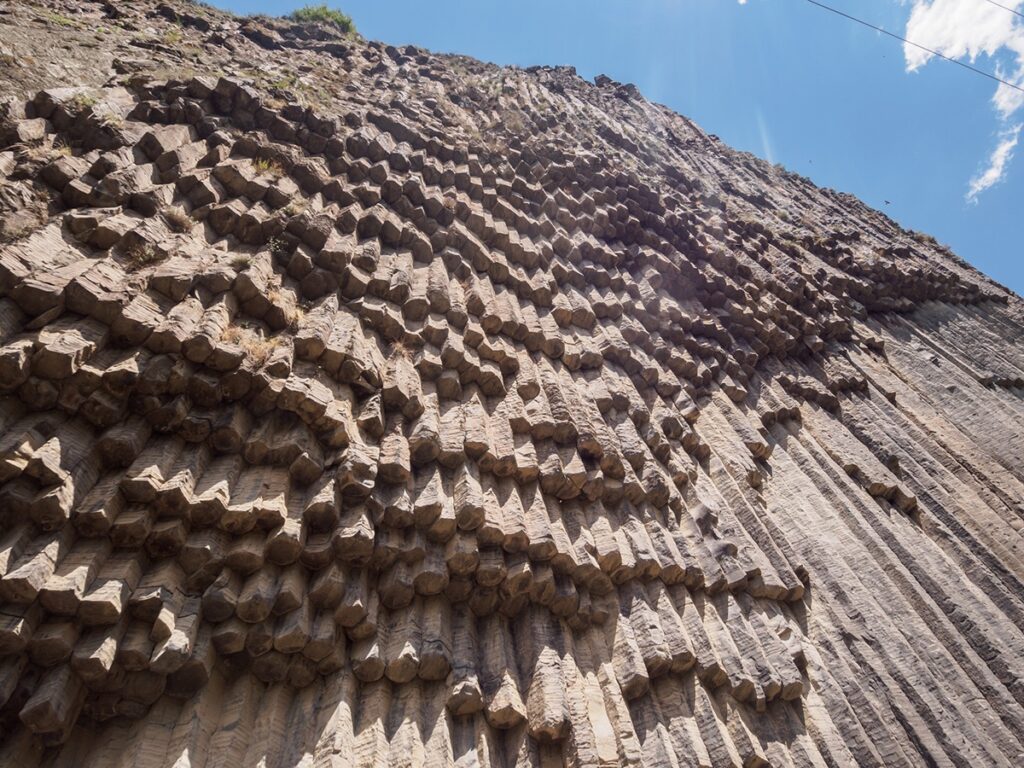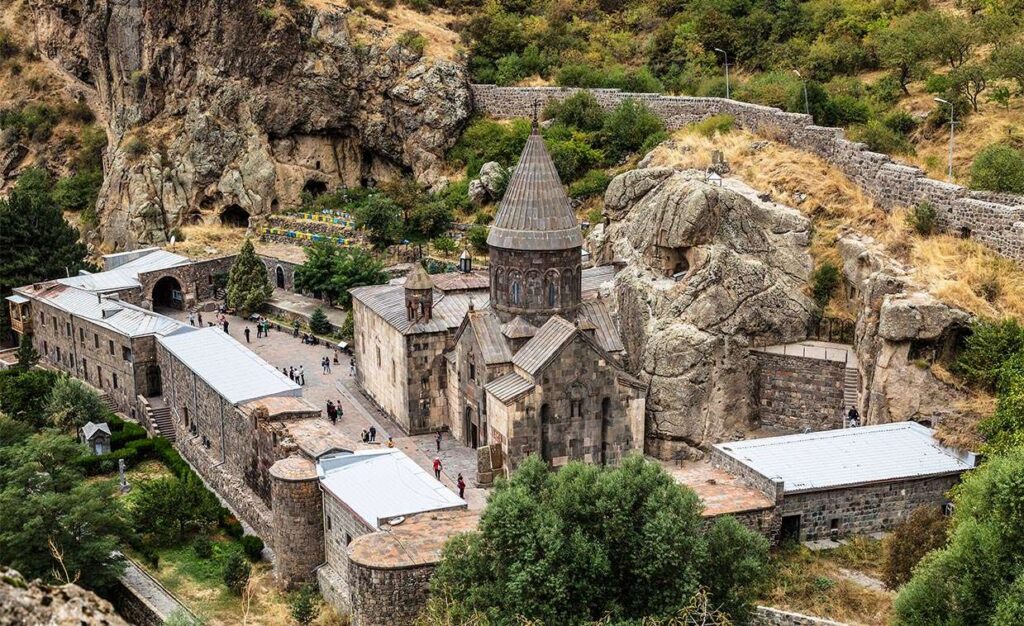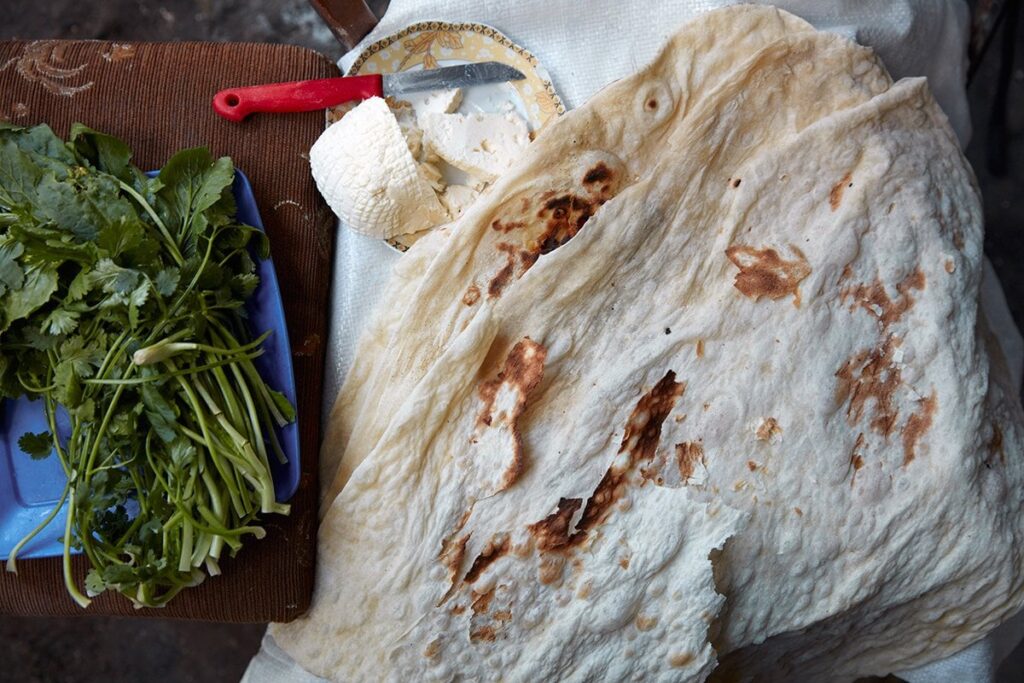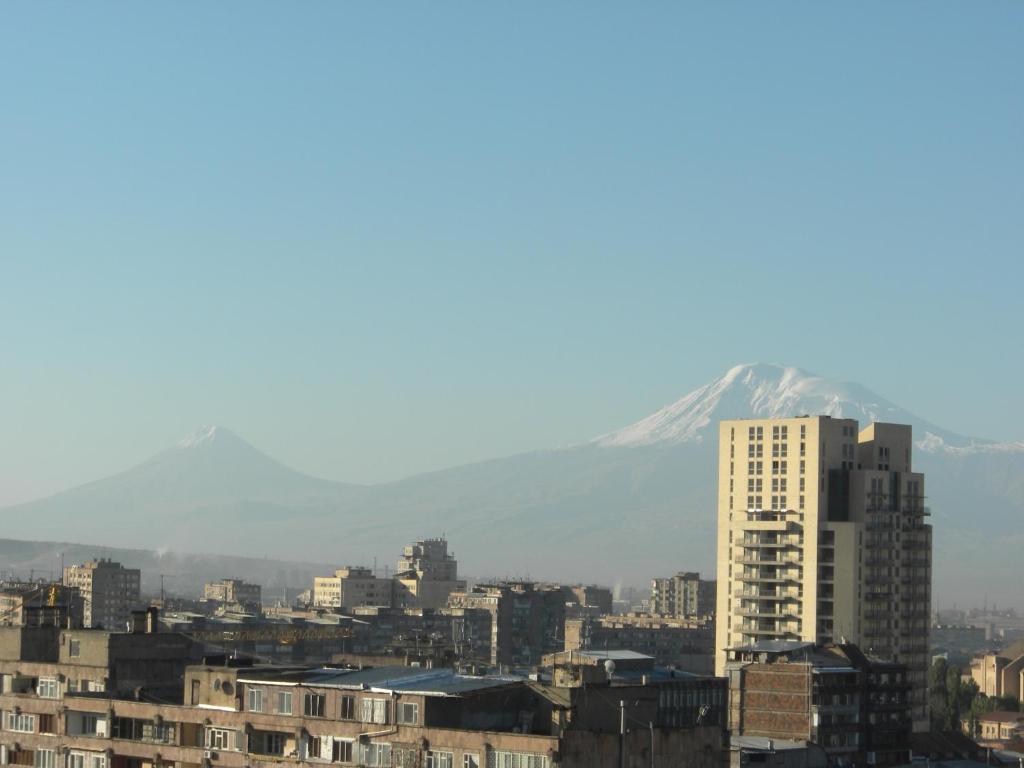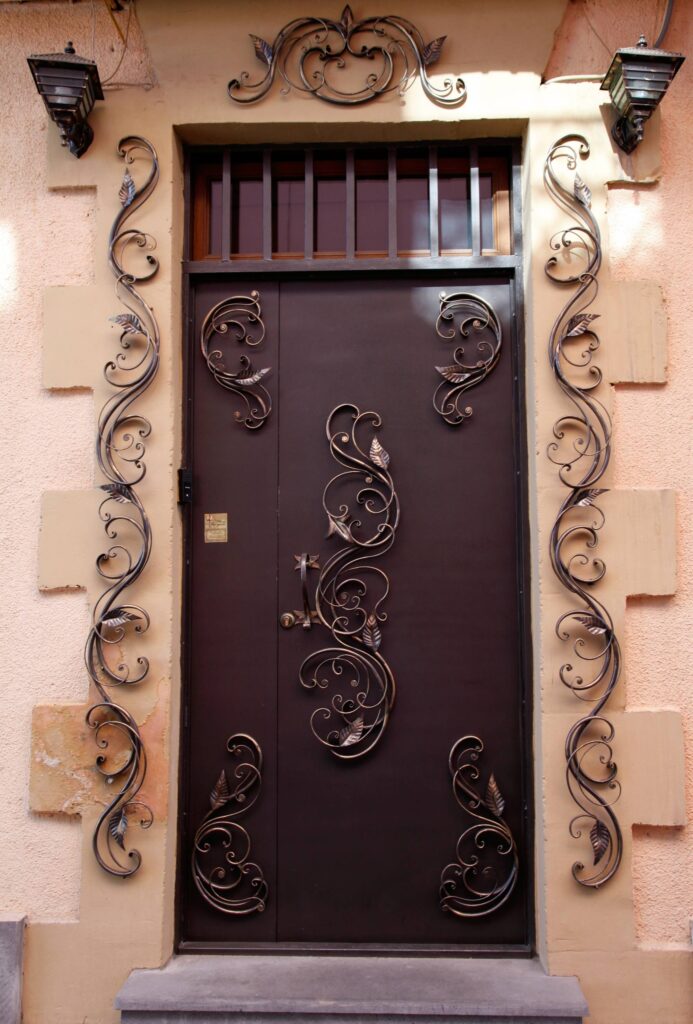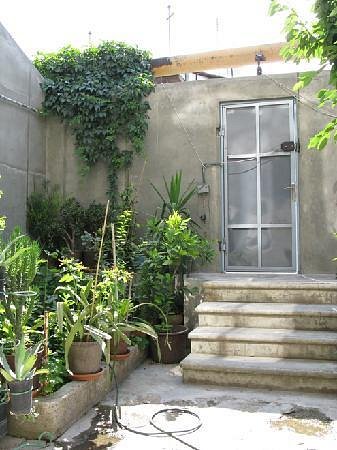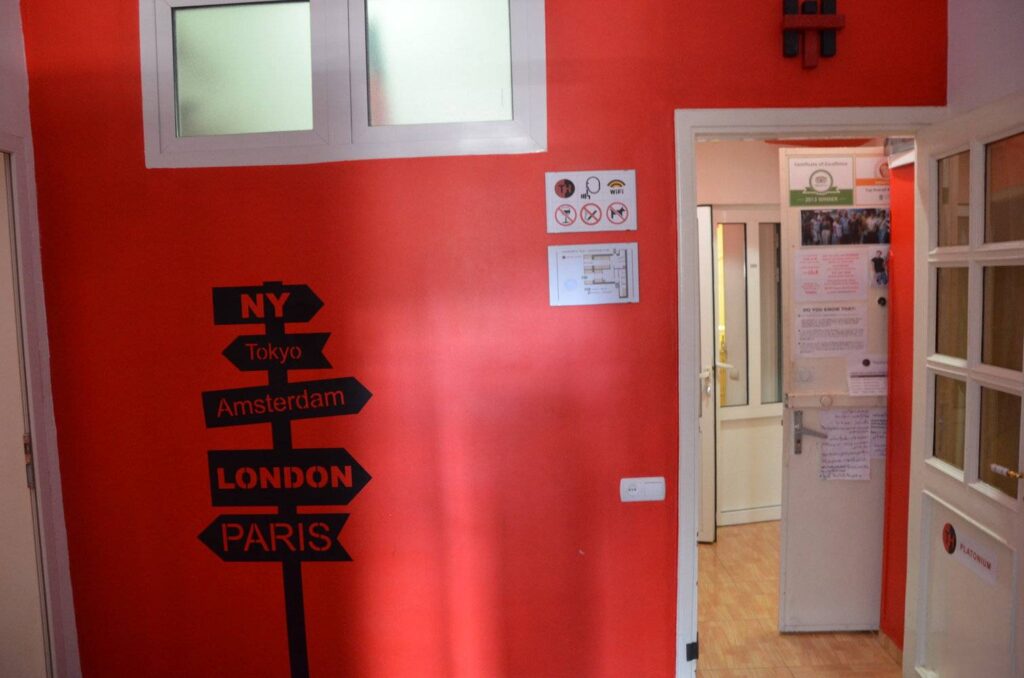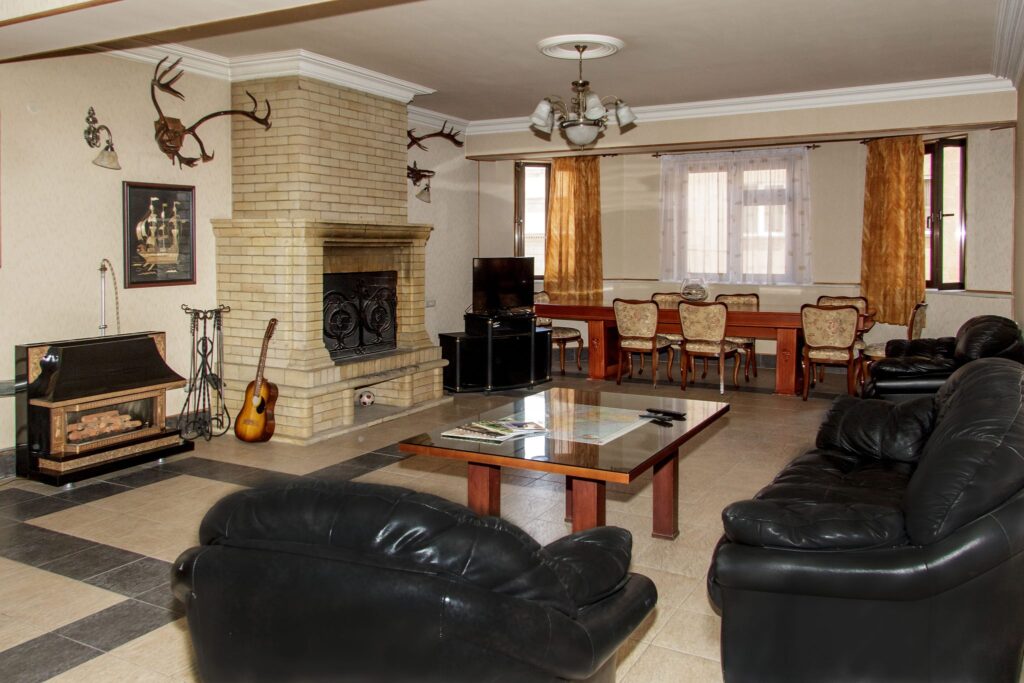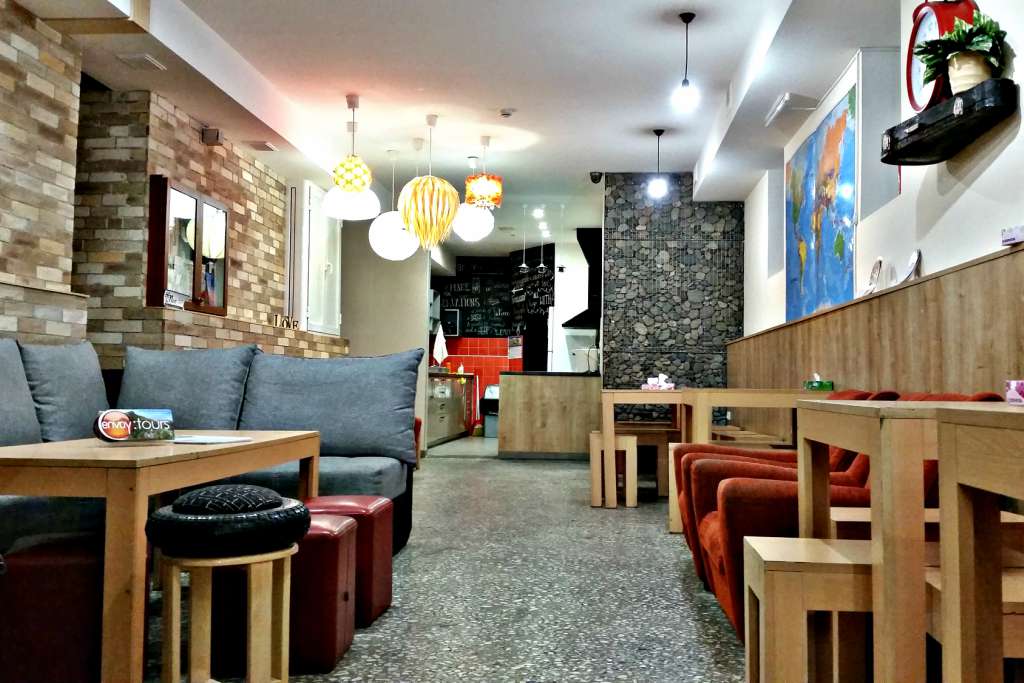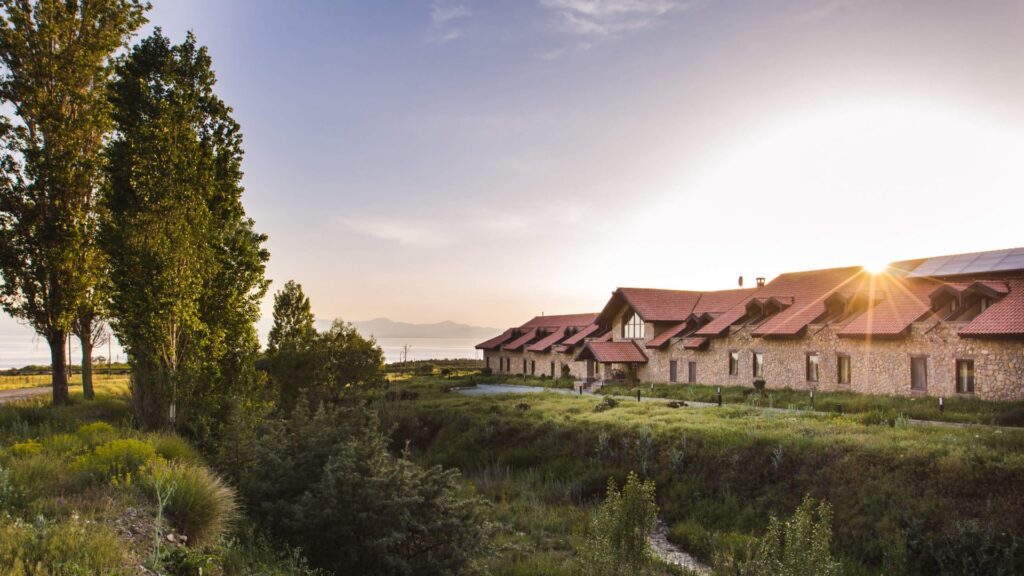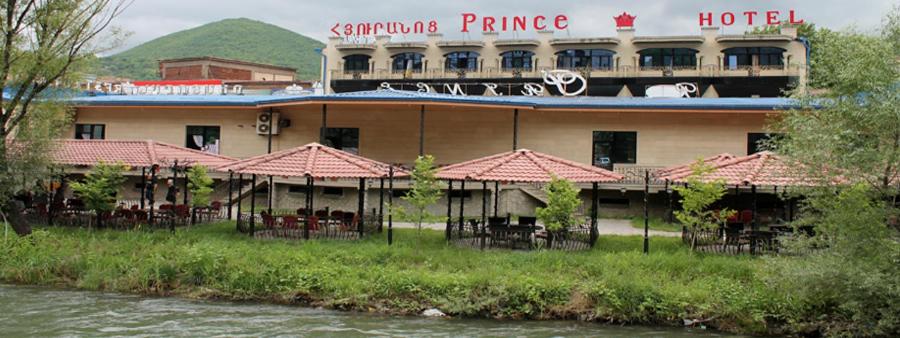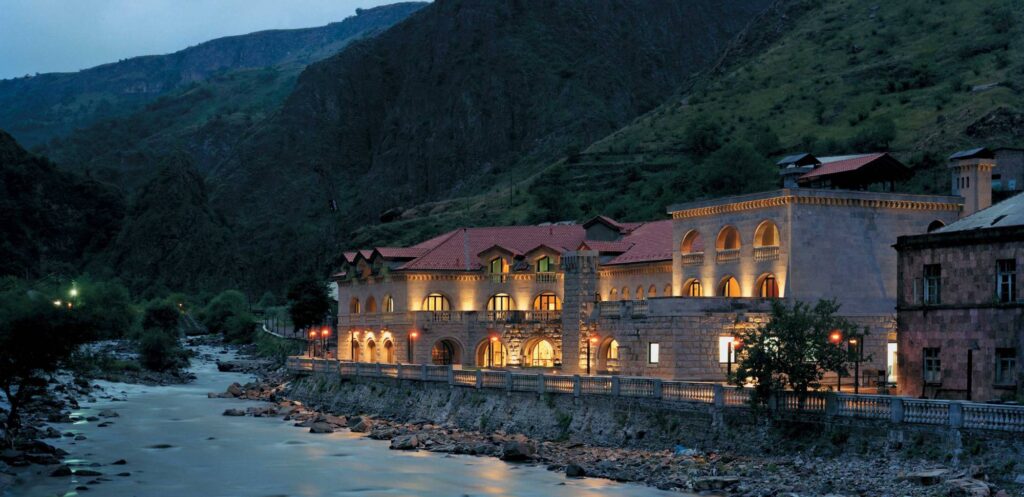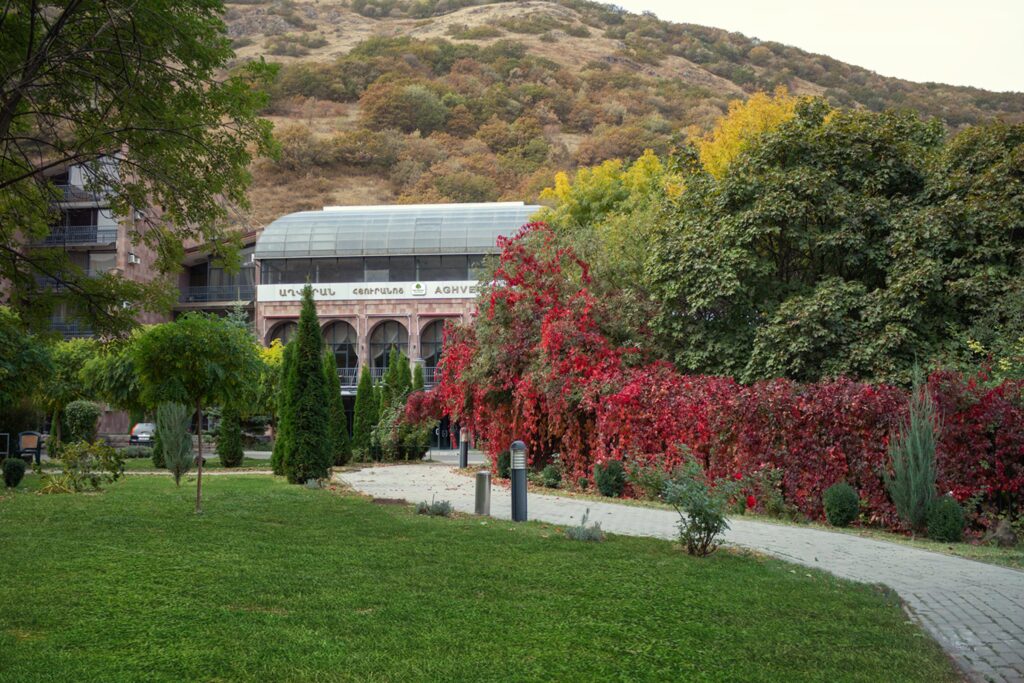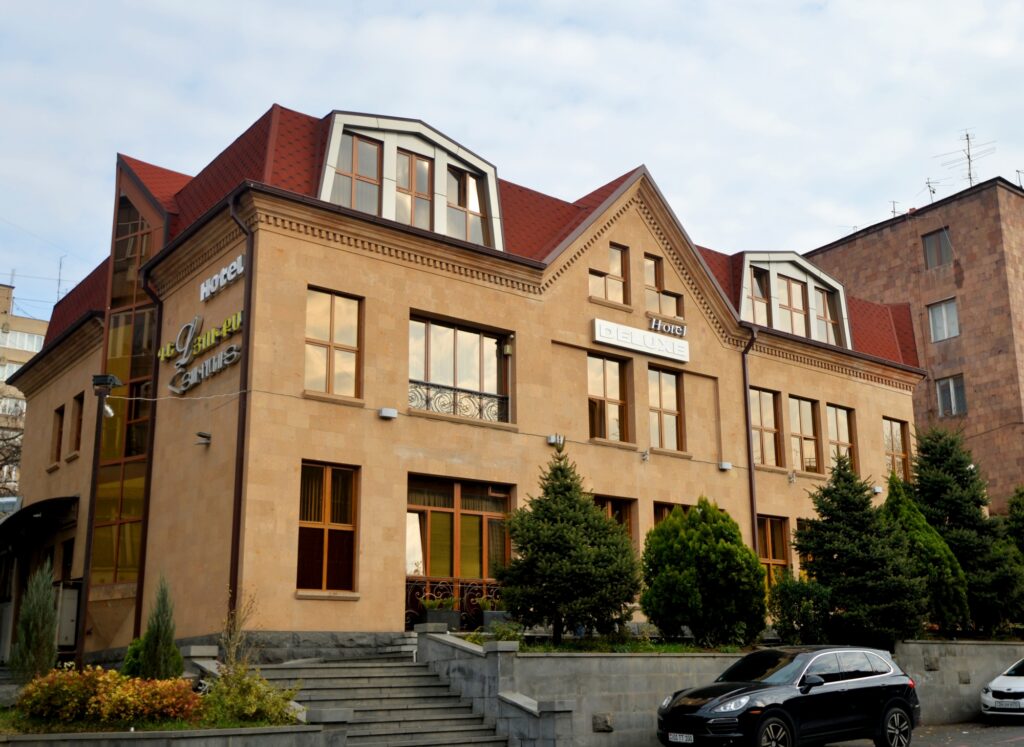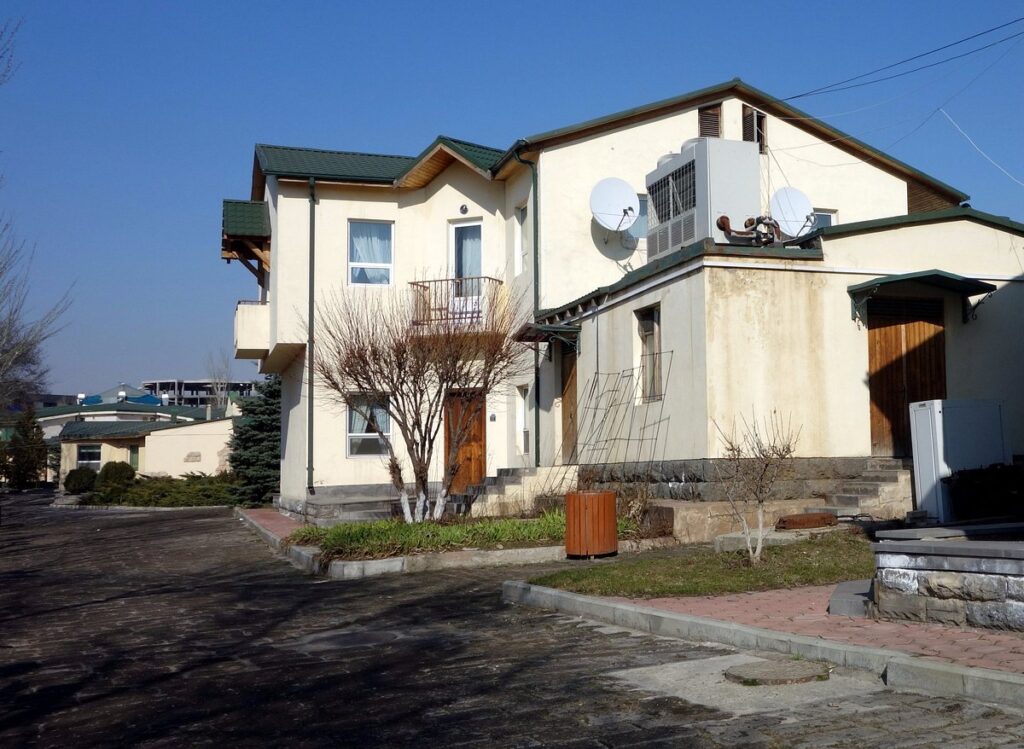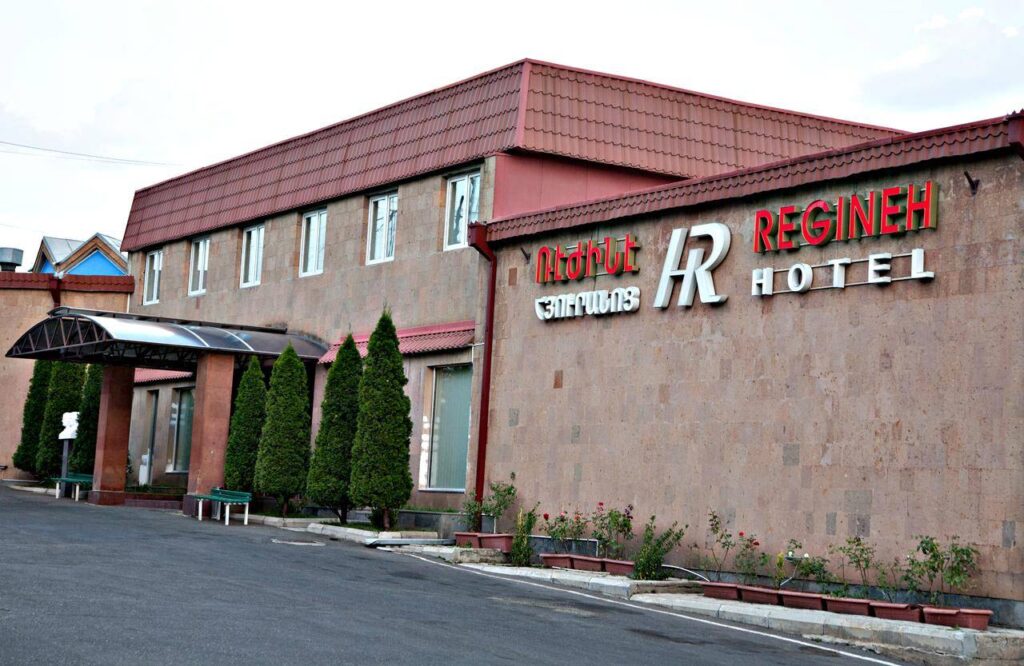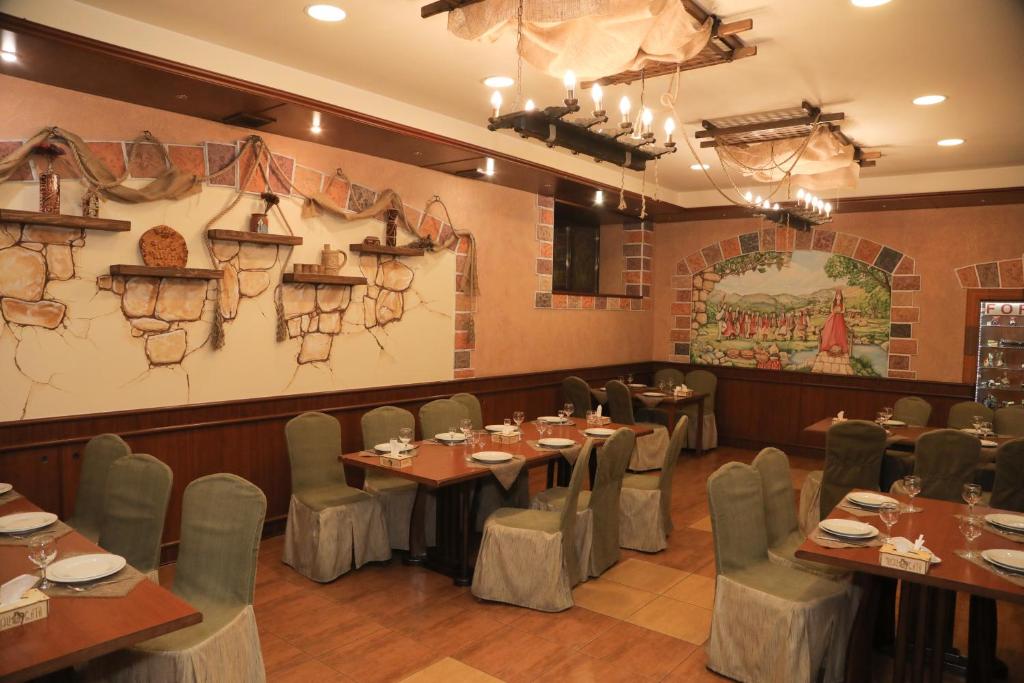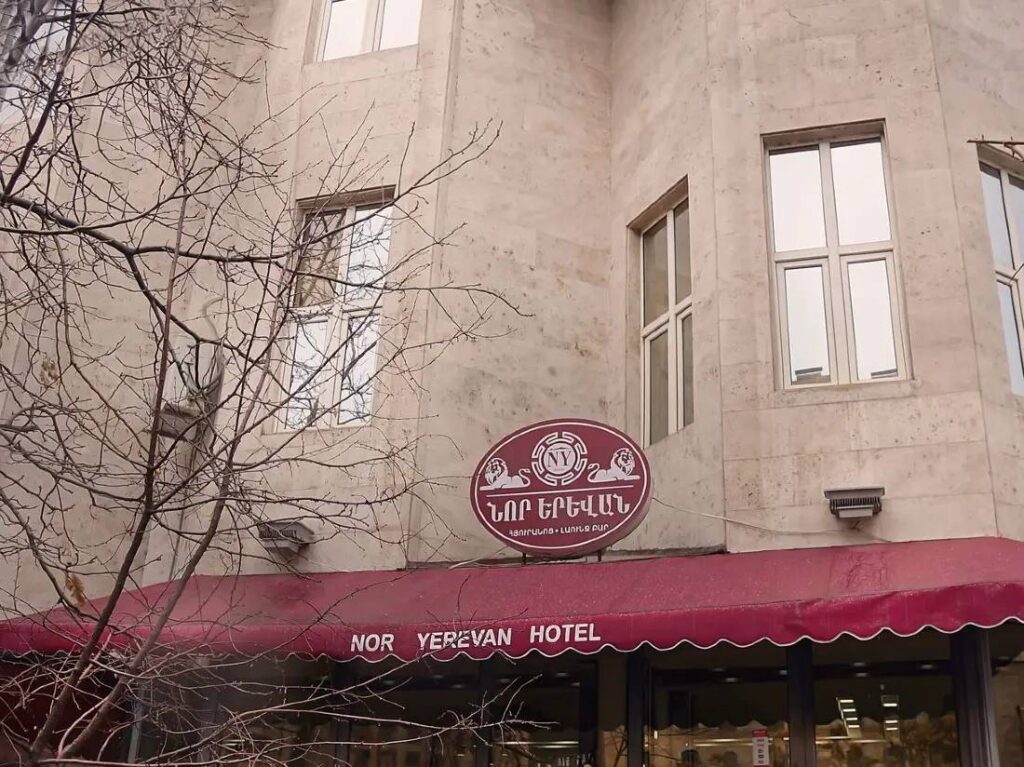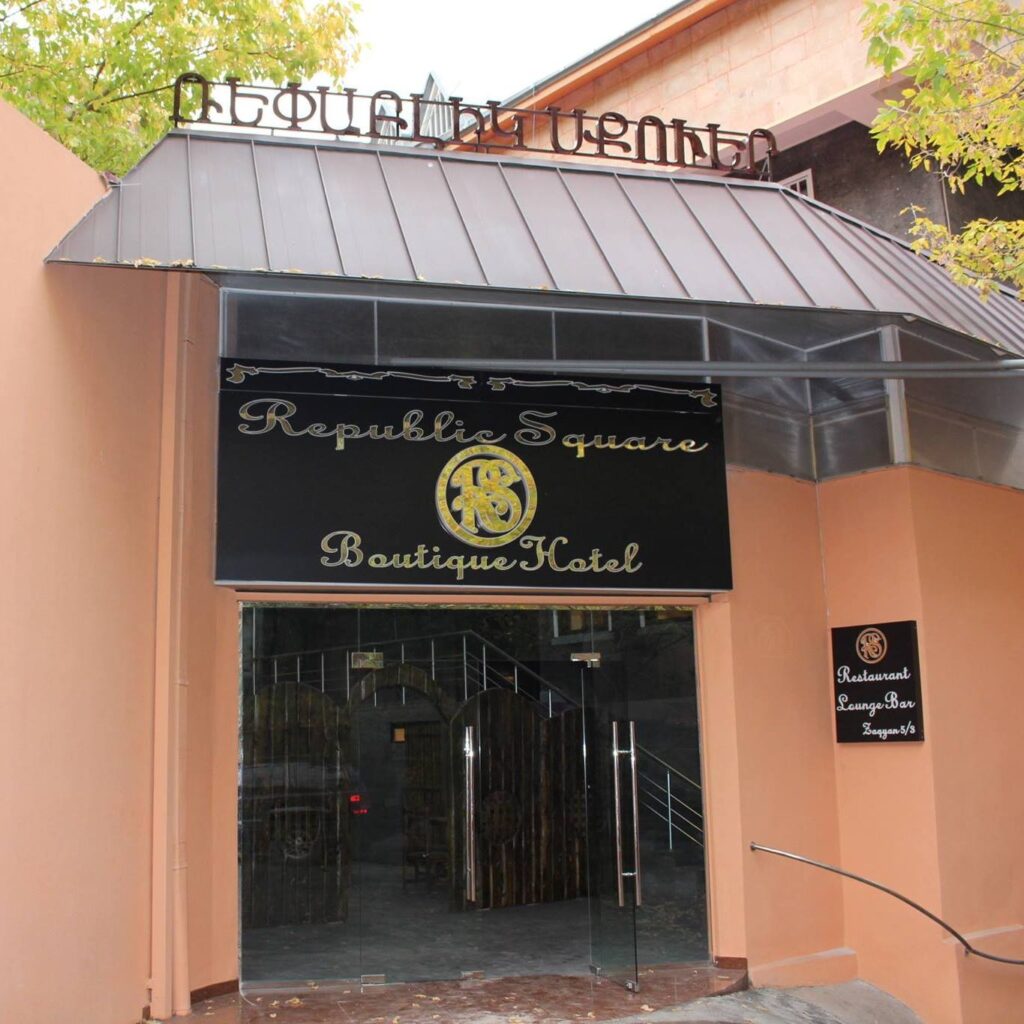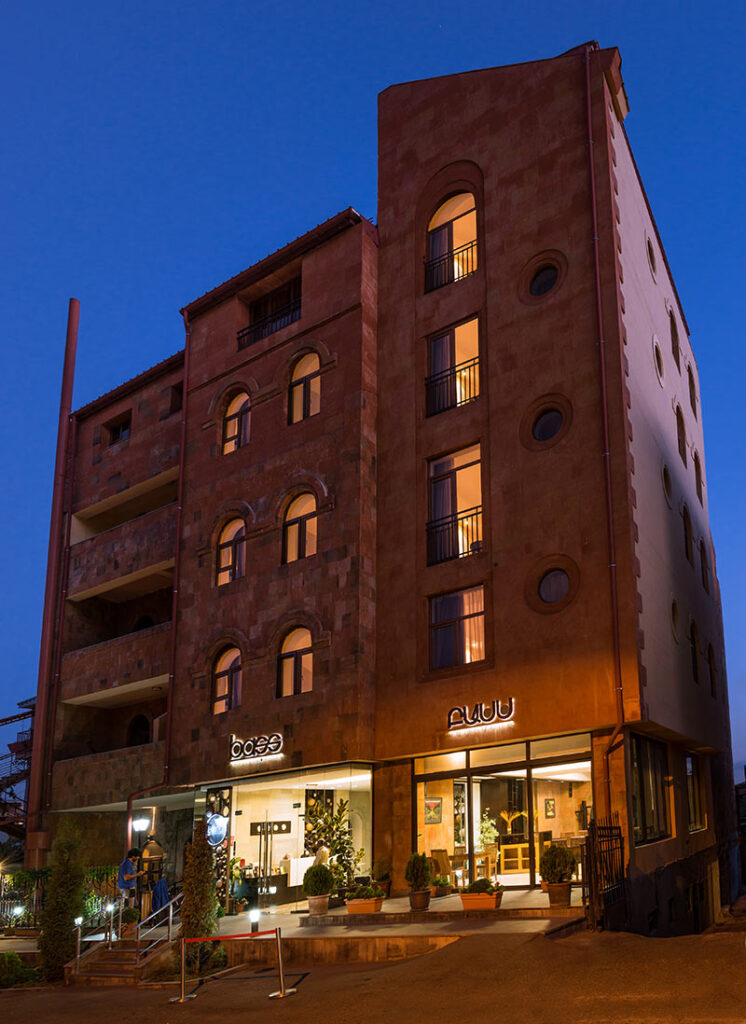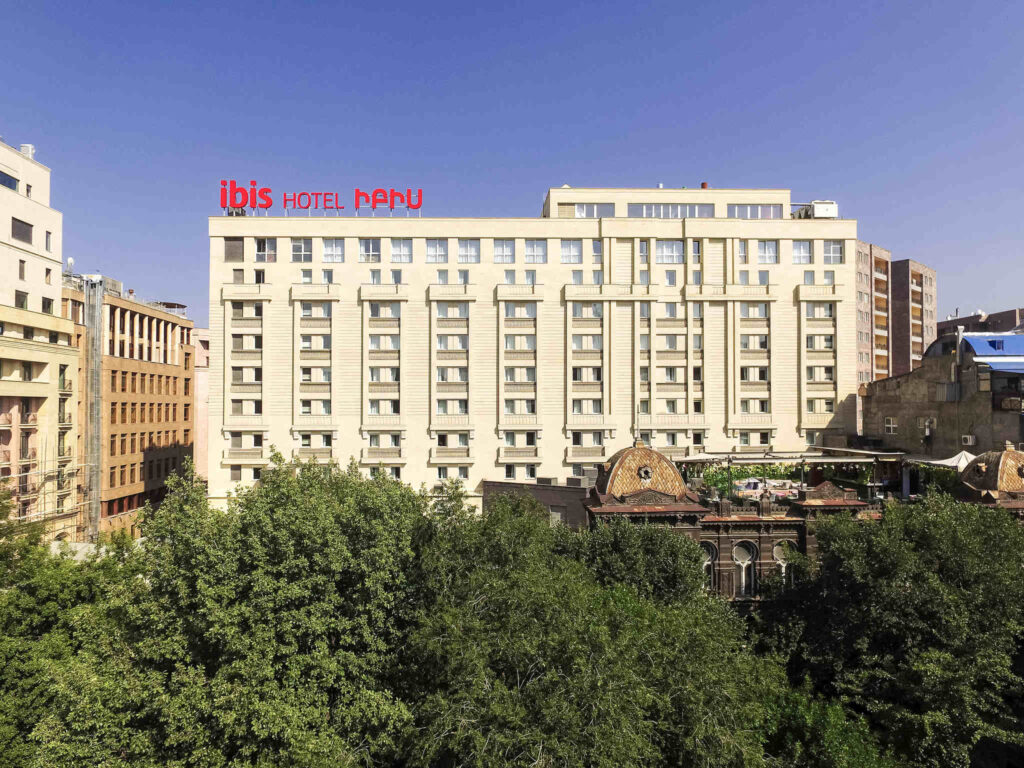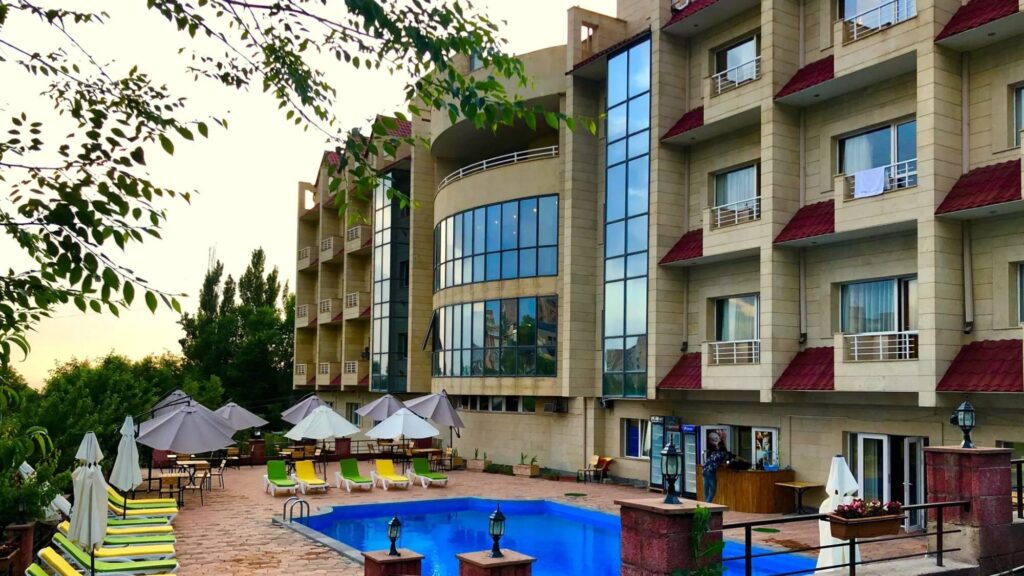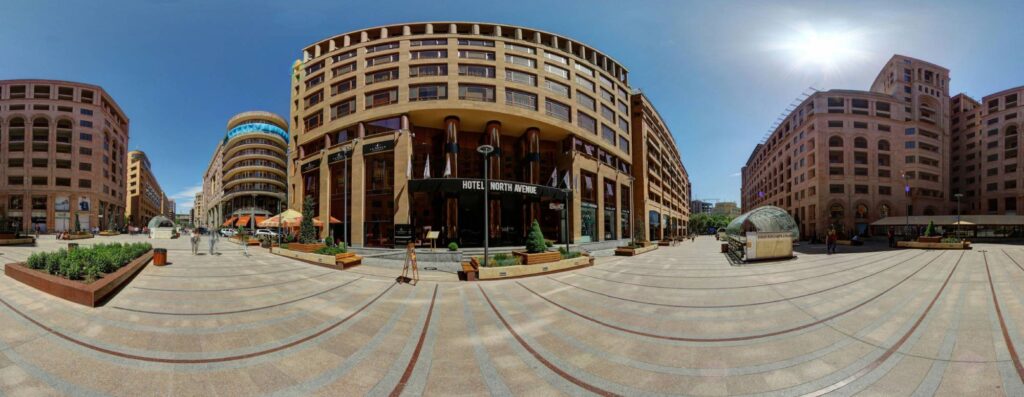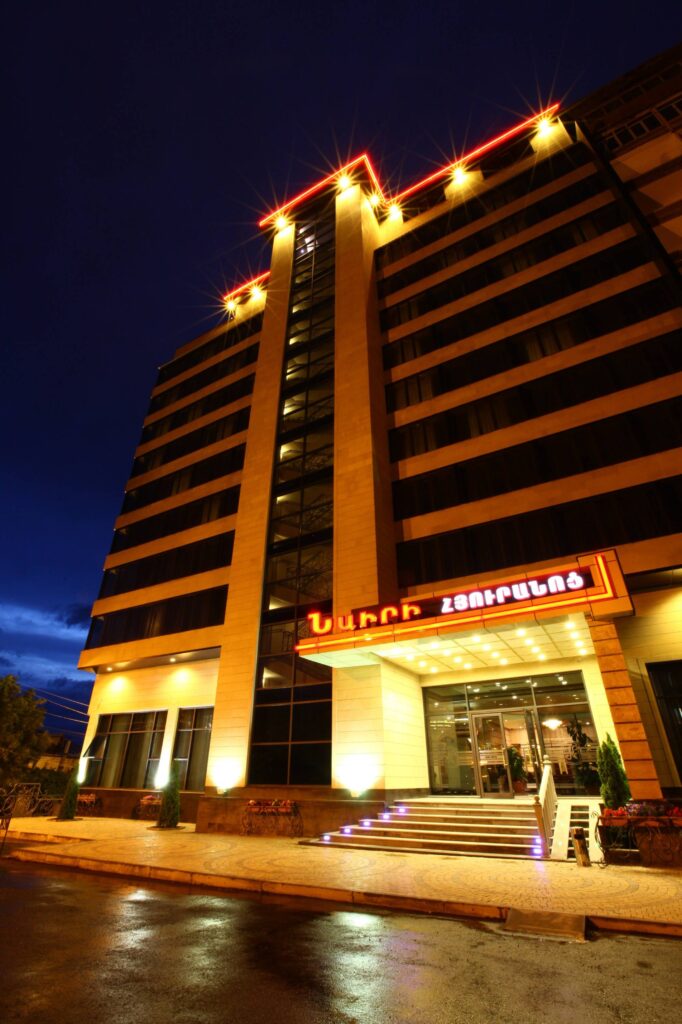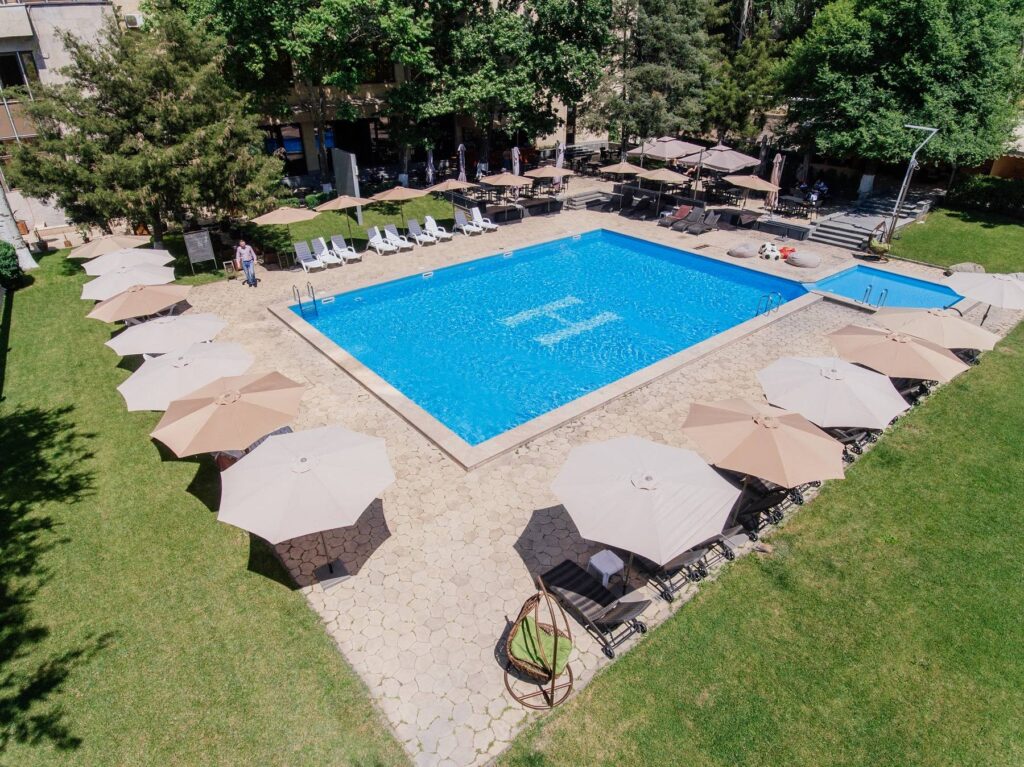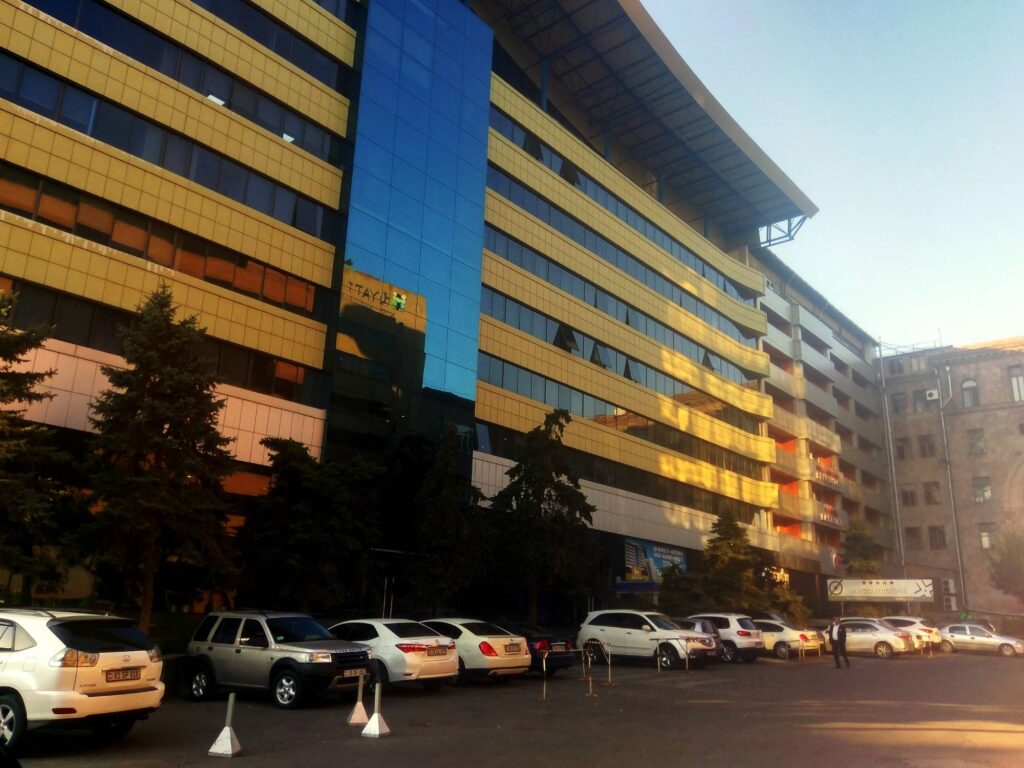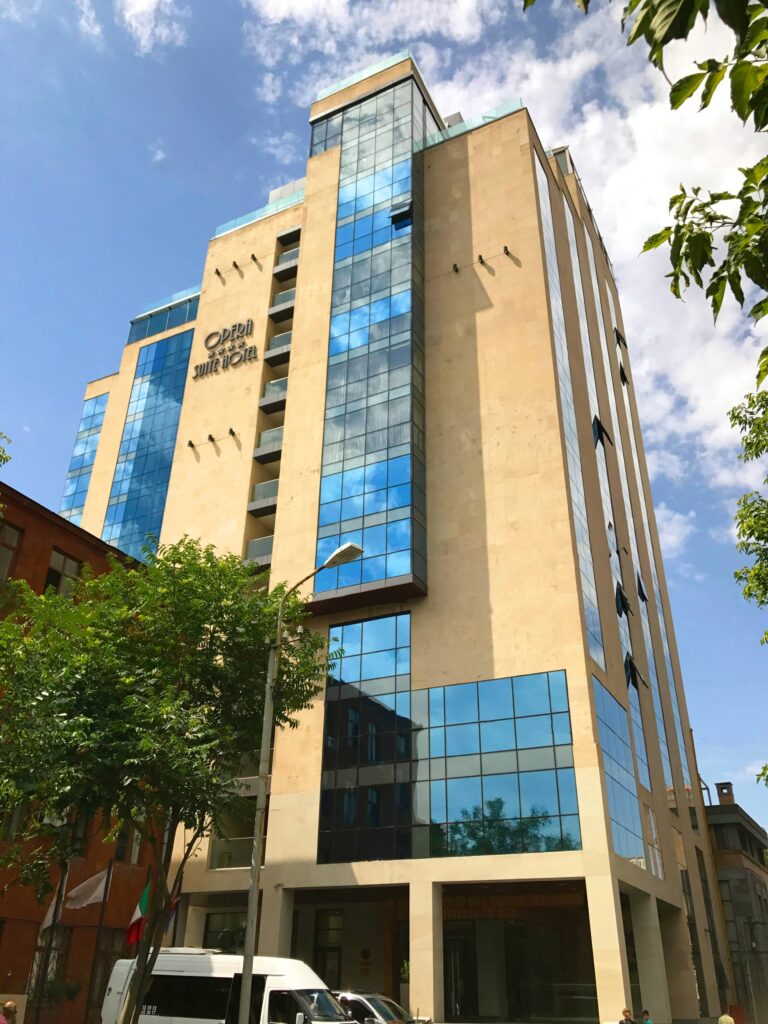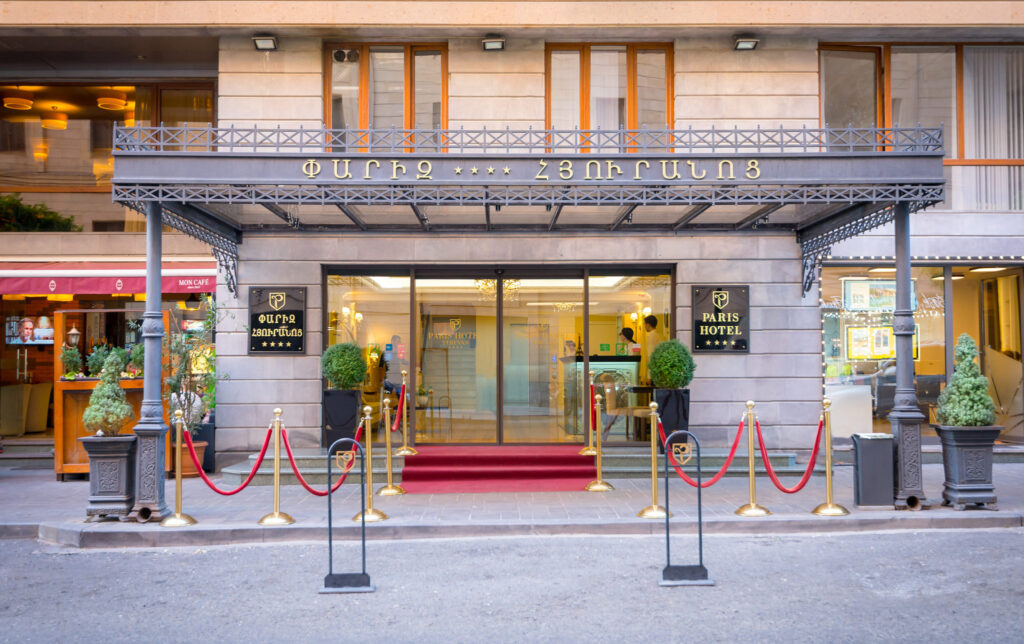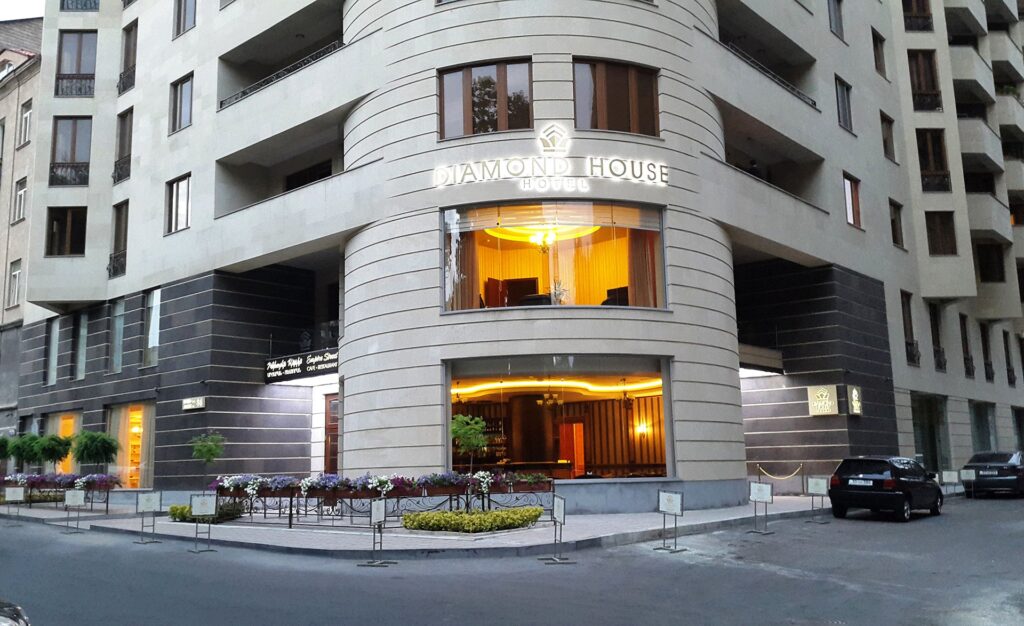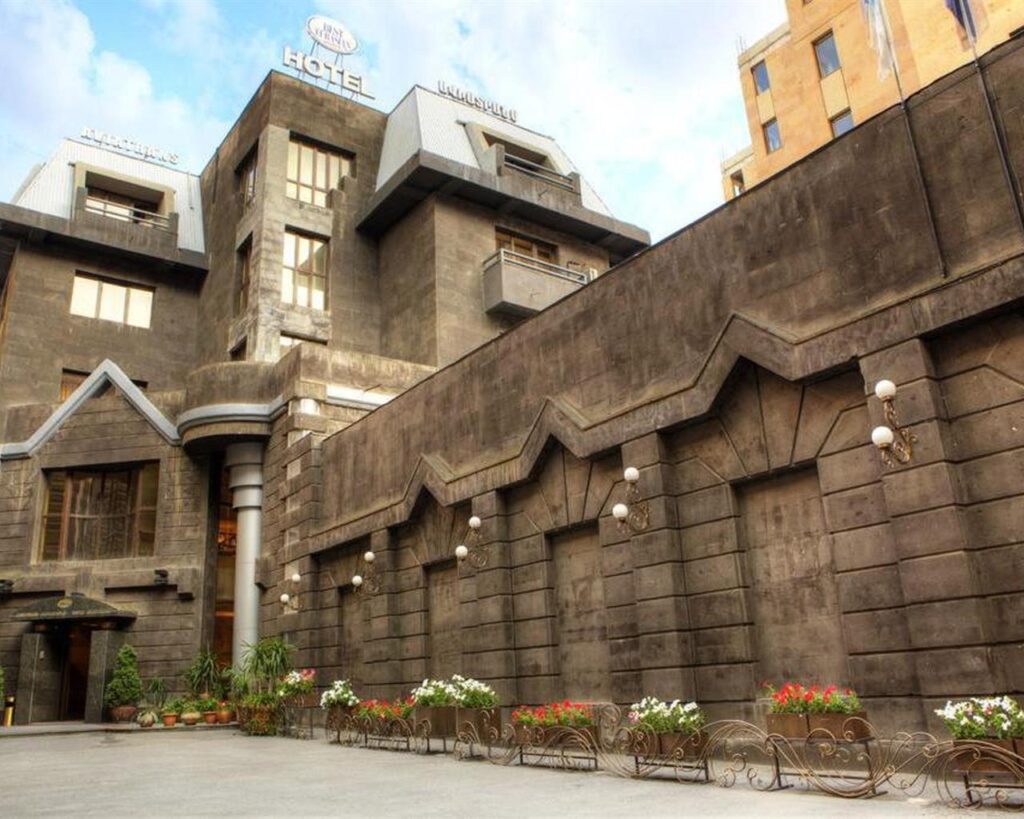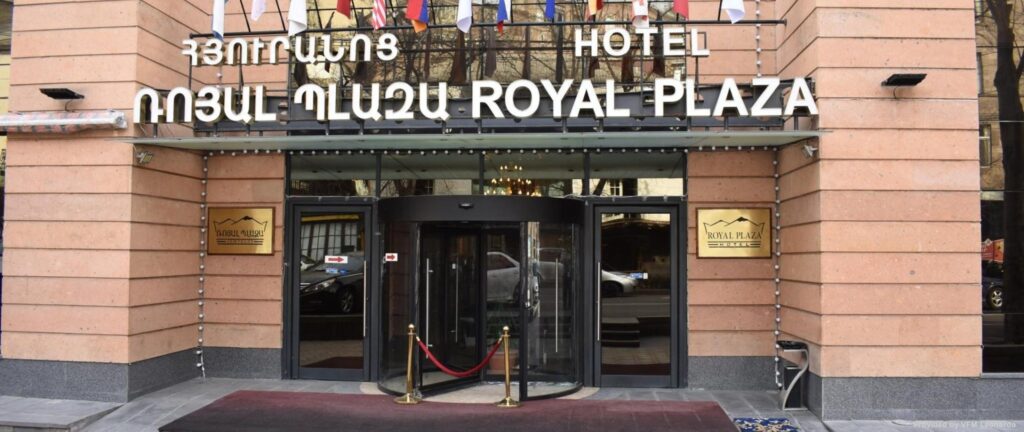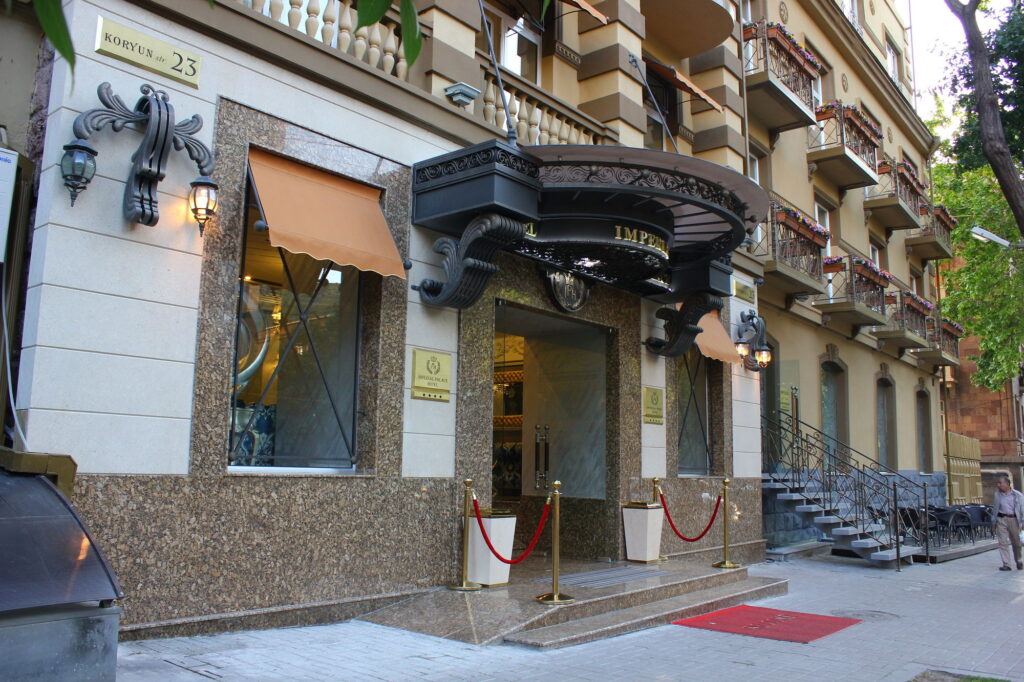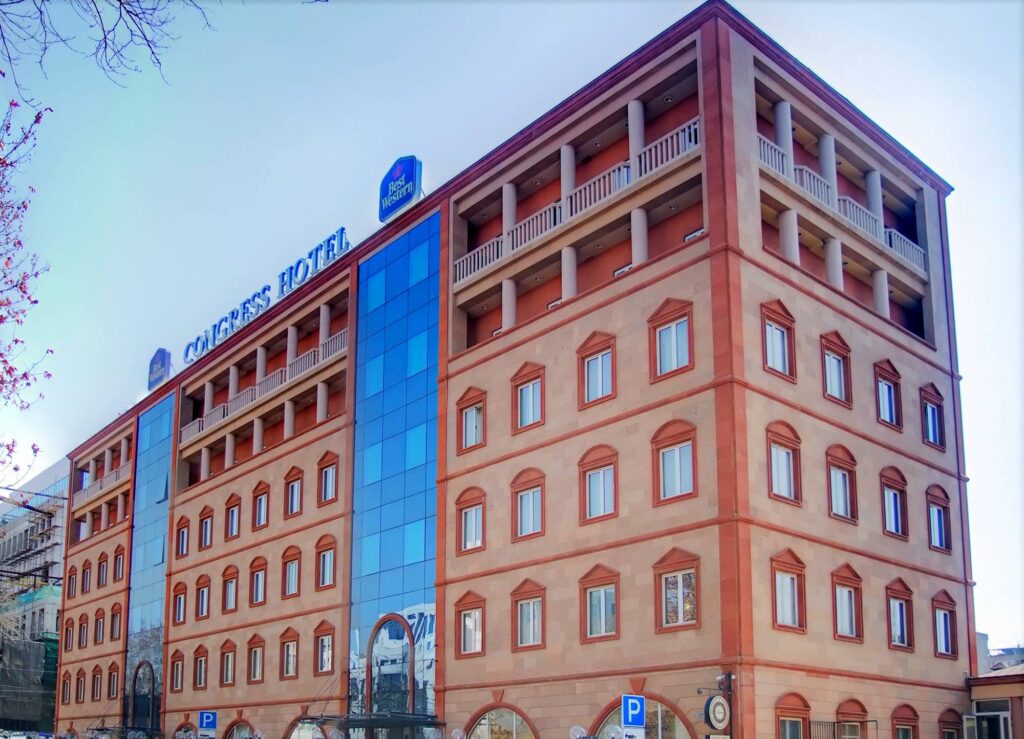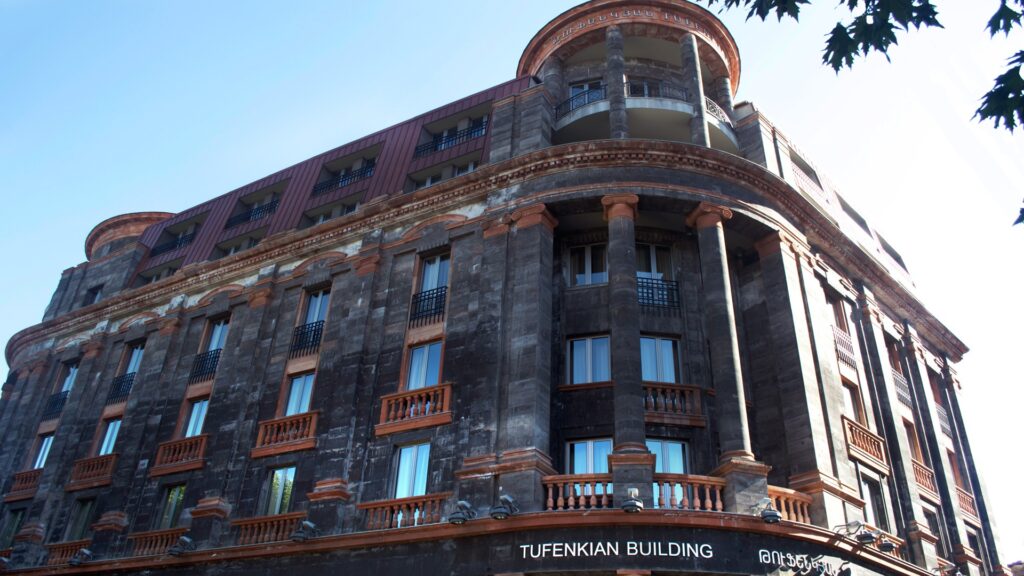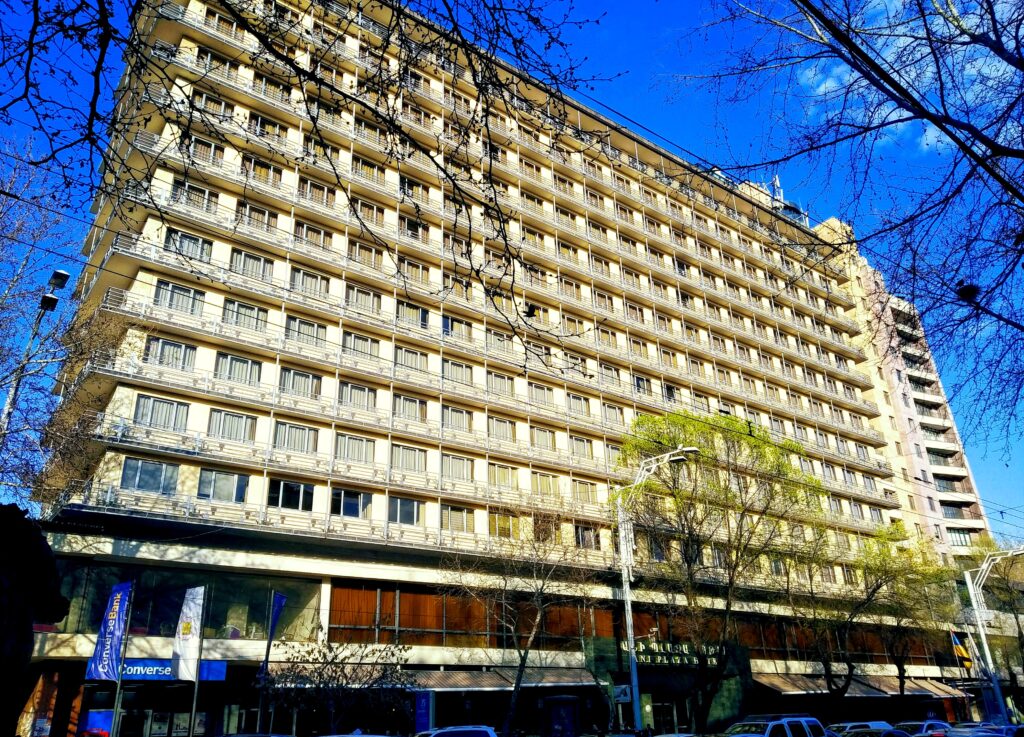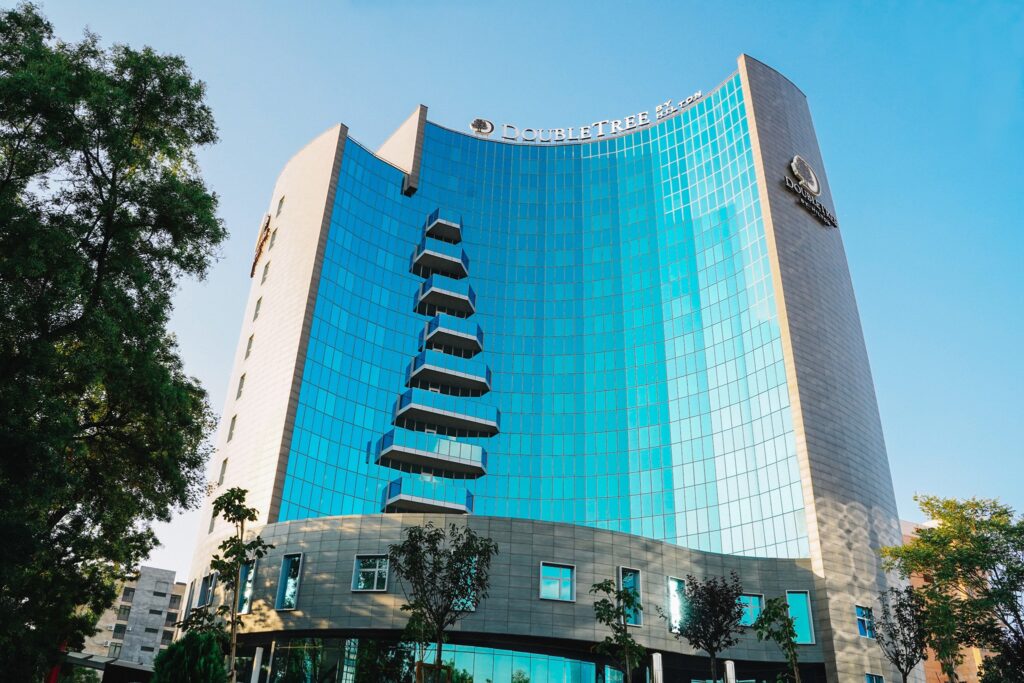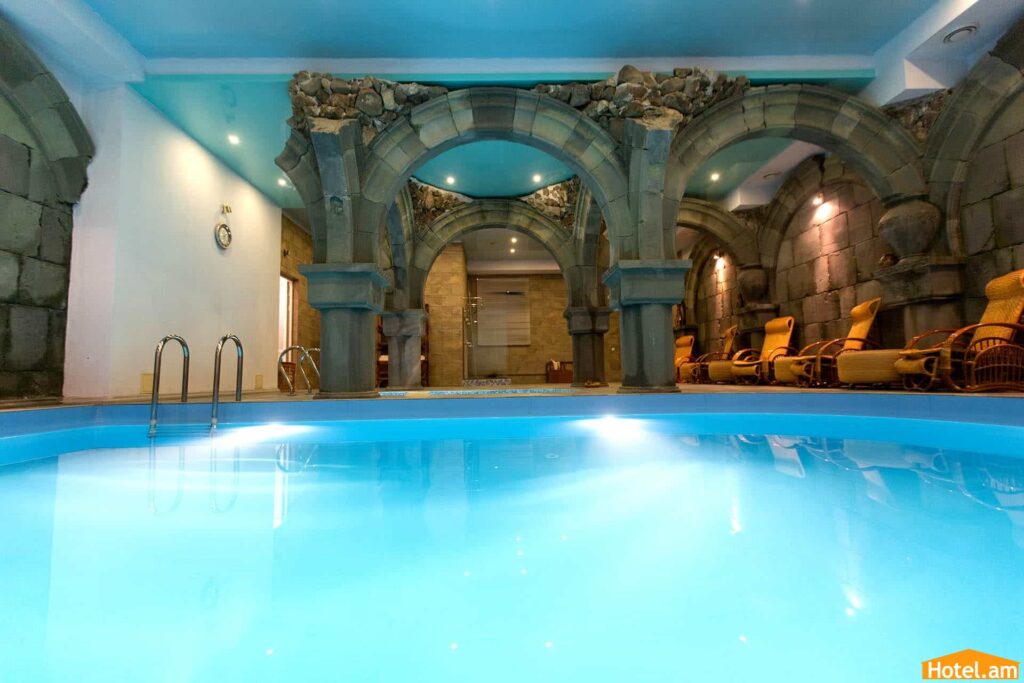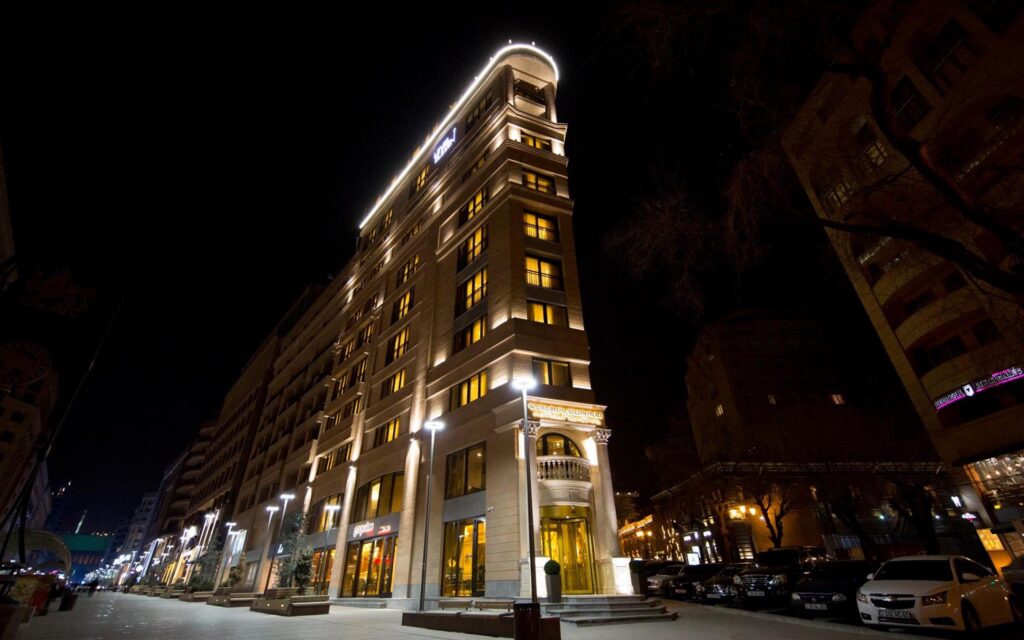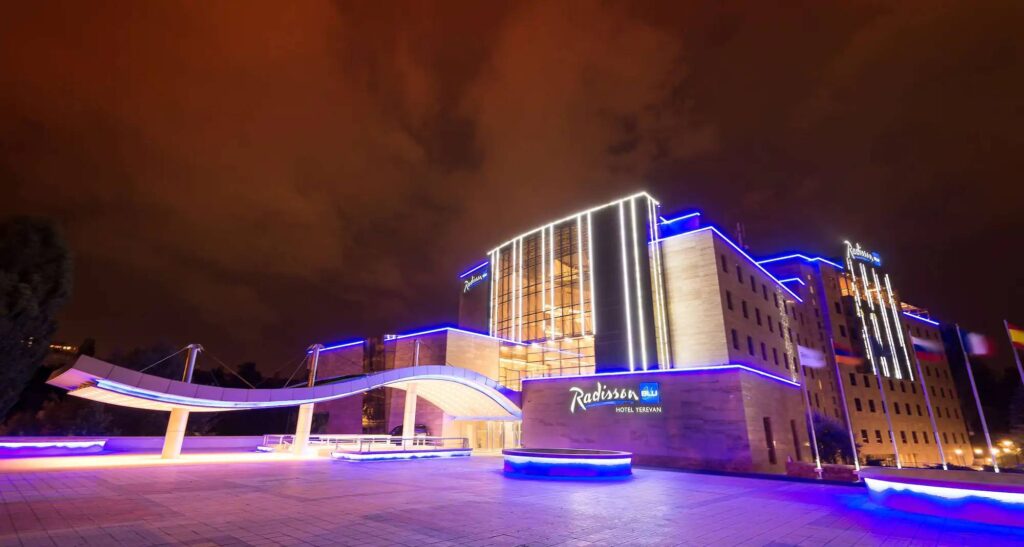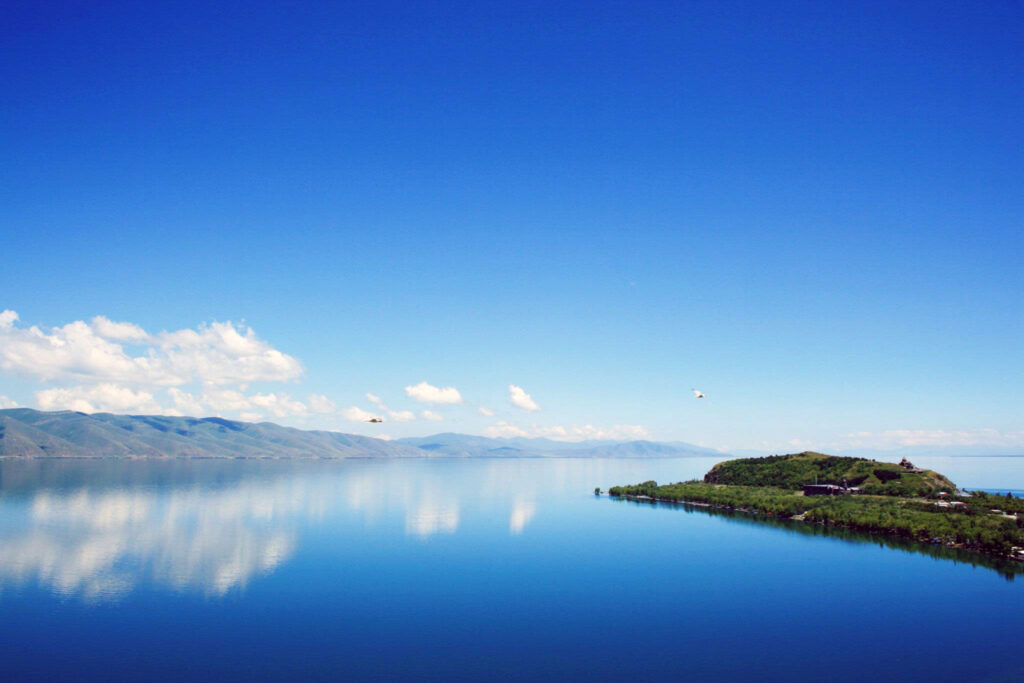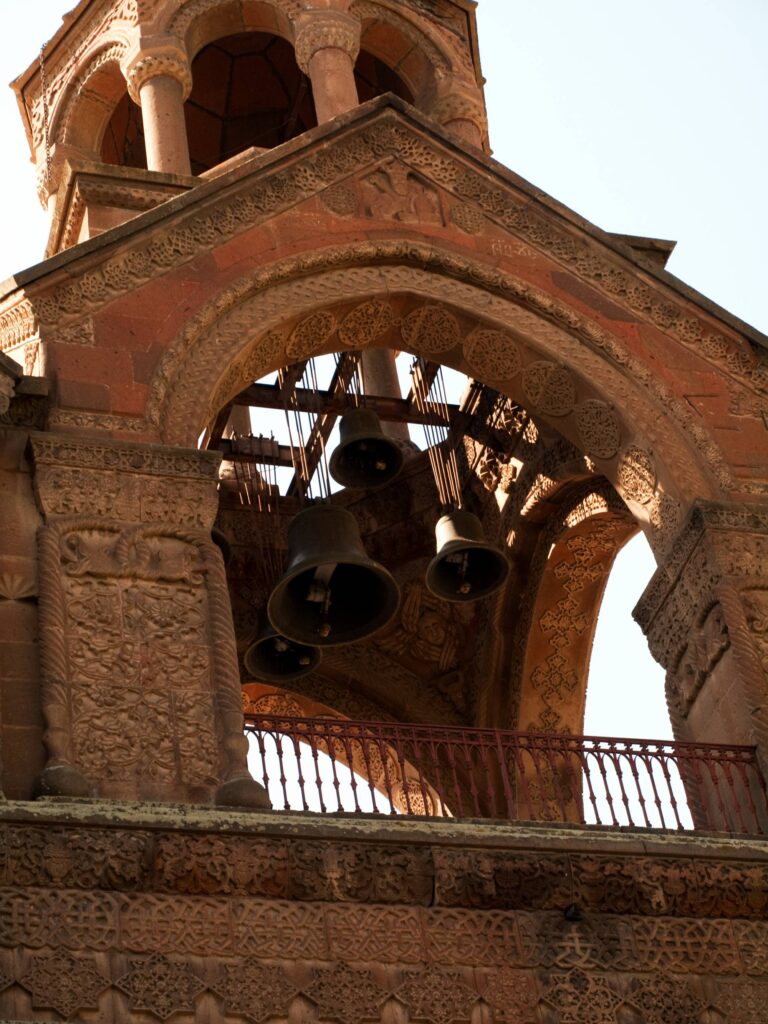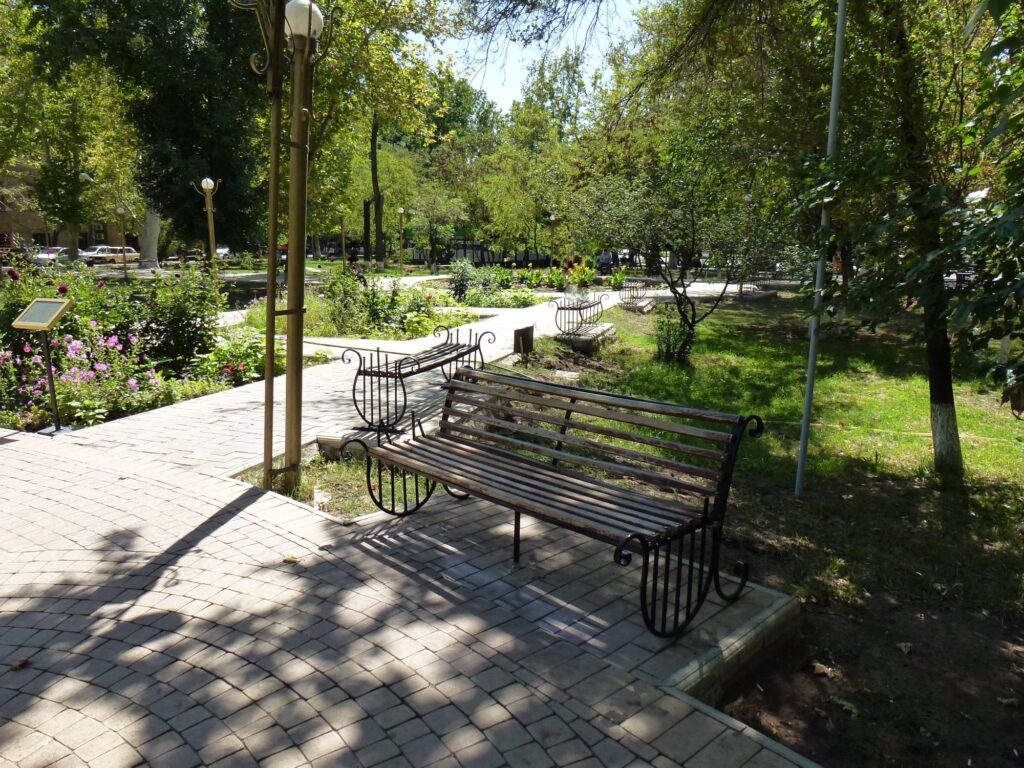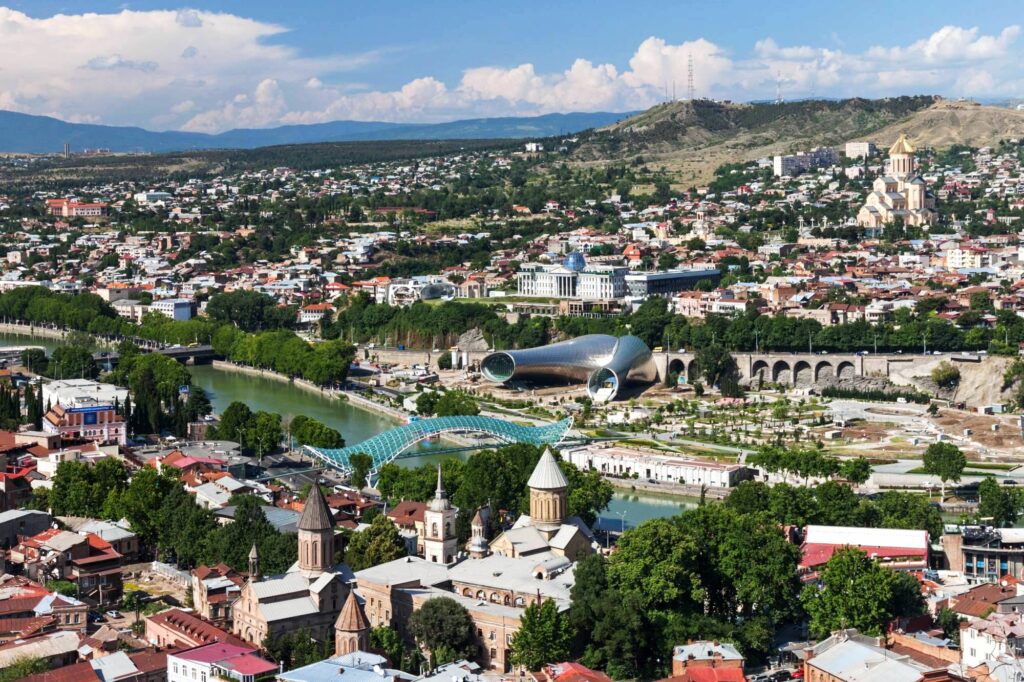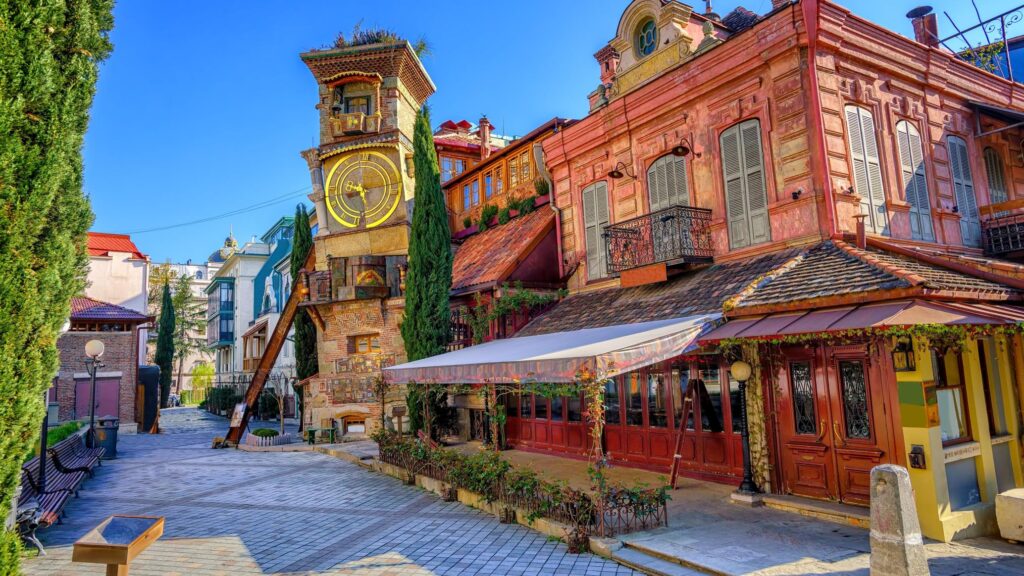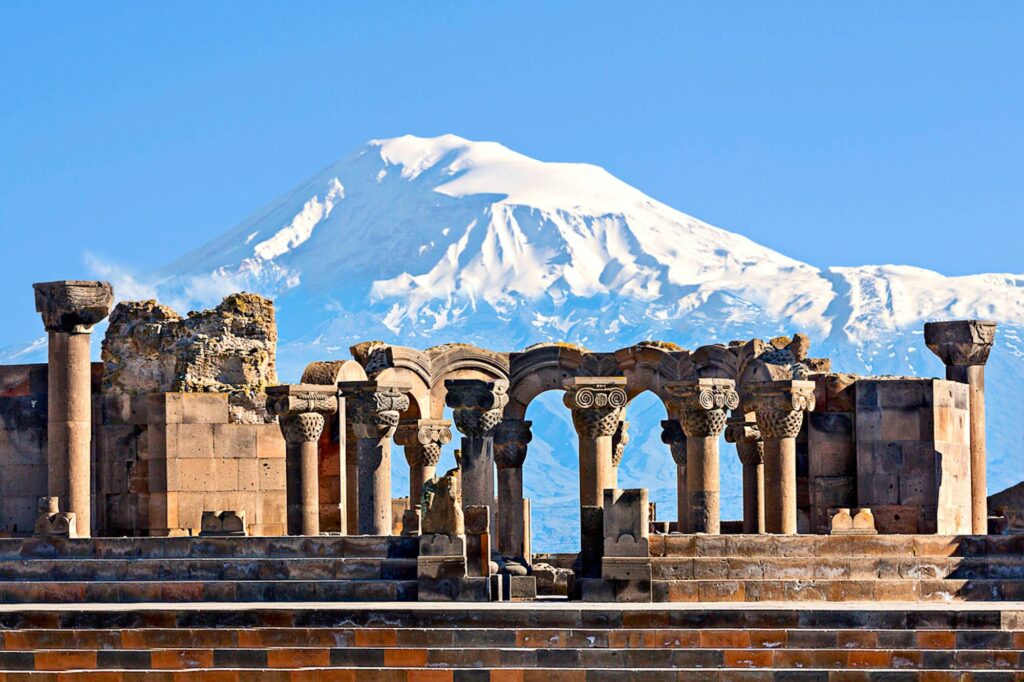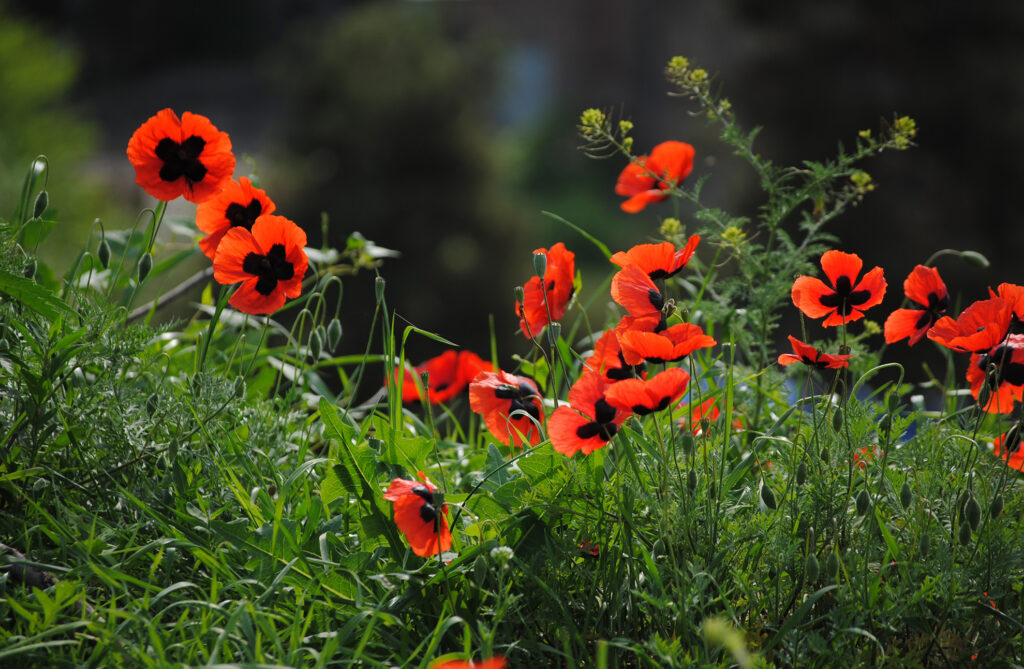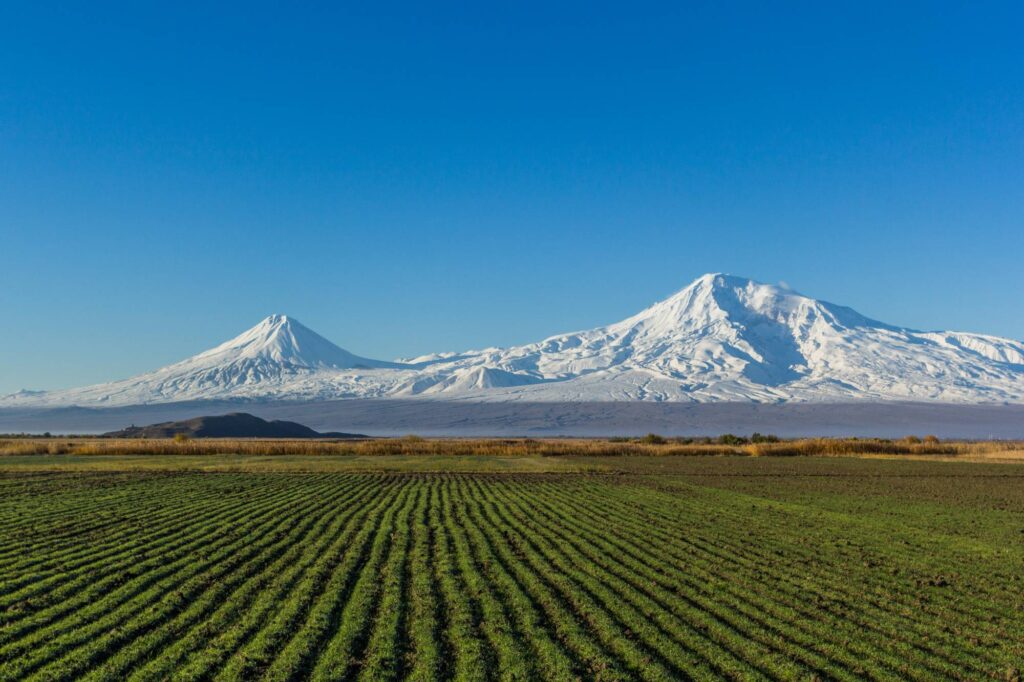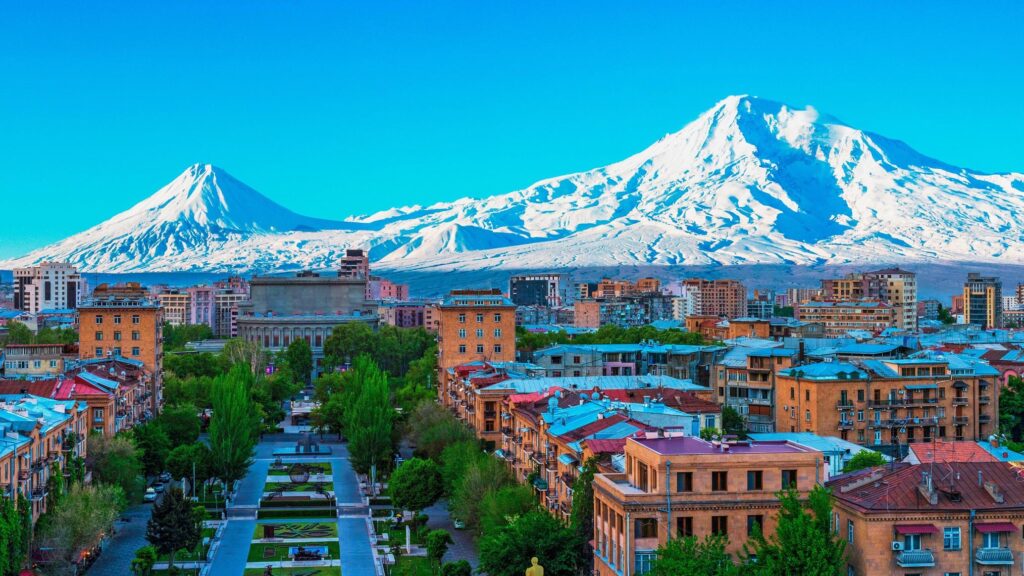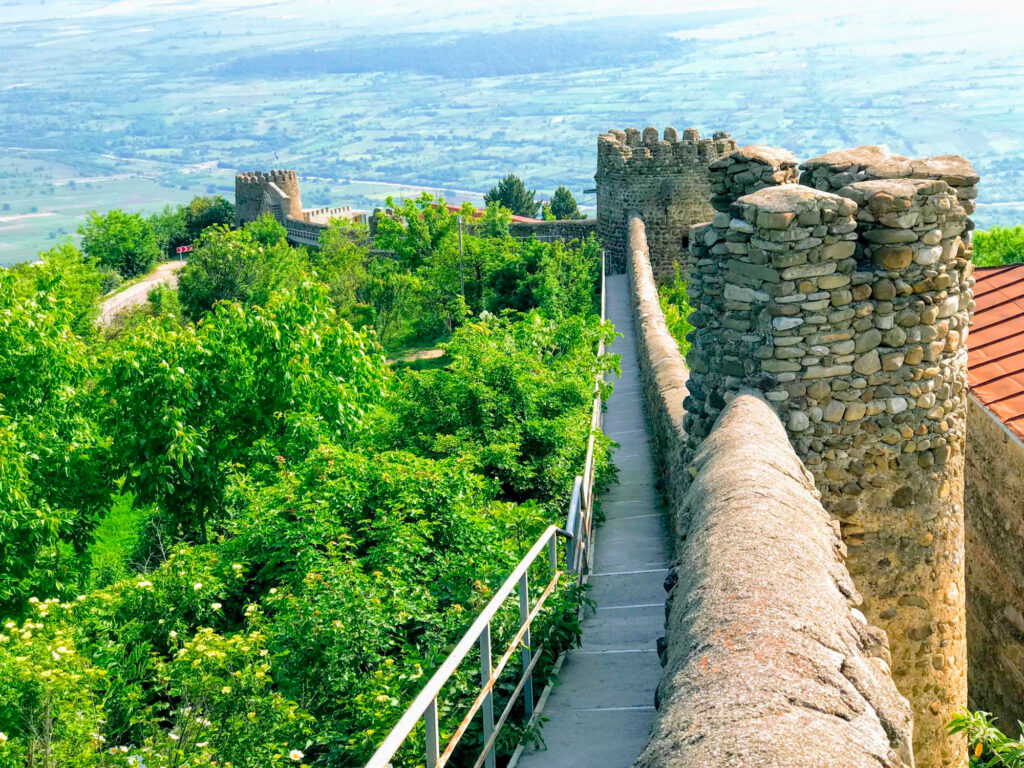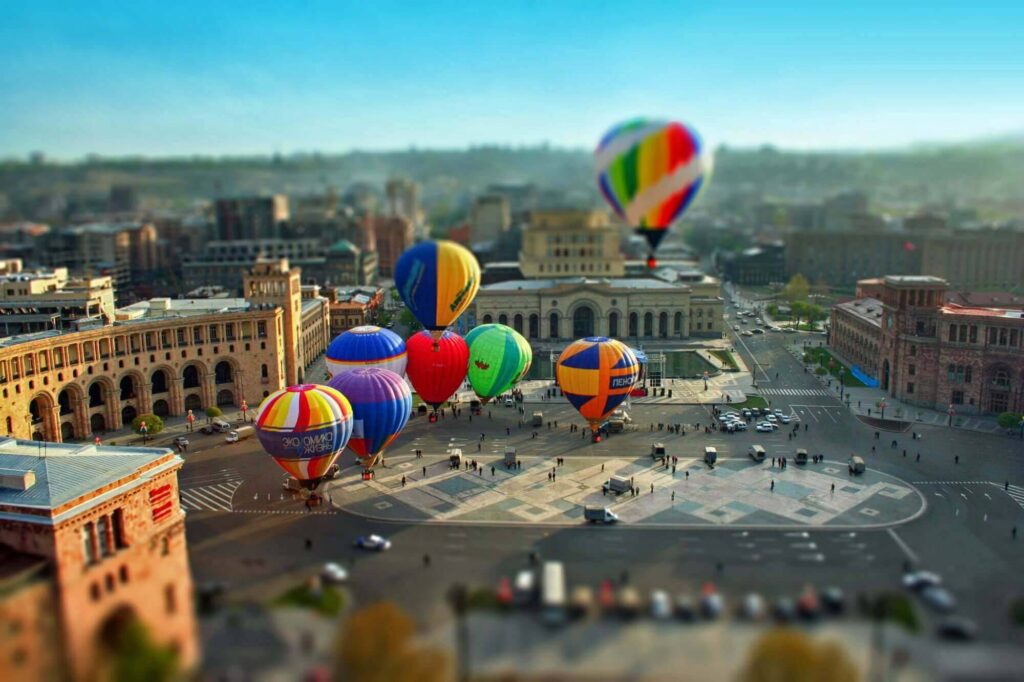TOUR PROGRAM
DURATION: 8 Days
DAY 1:
DEPARTURE / ARRIVAL
Depart for Armenia.
Transfer to the hotel for overnight.
DAY 2:
YEREVAN / ECHMIADZIN / CITY TOUR / YEREVAN
Breakfast in the hotel.
Full day excursion to Armavir Region: tour to Echmiadzin – the holy seat of the Supreme Patriarch-Catholicos of All Armenians. The Cathedral was built in 303 on the site of a pagan temple after the adoption of Christianity as a state religion in 301 in a walled compound with gardens and various structures.
The word “Echmiadzin” means “The coming of the only-begotten”, and the cathedral was built on the very spot Grigor Lusavorich (St. Gregory the Illuminator) dreamt Jesus Himself descended on from heaven to show him where He wanted the church to be built. The tour also includes a visit to St. Hripsime Church (7th century). A few kilometers from Echmiadzin there are the ruins of the 7th century AD Temple of Zvartnots, which is going to be our next stop.
Afternoon visit to Armenia History Museum and Matenadaran having a collection of over 16000 ancient manuscripts.
Crafts items: Visit Arshaluys village near Metsamor, to be welcomed in the workshop studio of Armenian Khachkars! The most common feature is a cross with a rosette or a solar disc below it. The remainder is usually filled with patterns of leaves, grapes, pomegranates, or abstract knot work patterns. Occasionally it is surmounted by a cornice with biblical or saints’ characters.
The most common reason for erecting a khachkar was for votive reasons – for the salvation of the soul of either a living or a deceased person. They were also erected for other reasons, such as to commemorate a military victory, construction of a church, or as a form of protection from natural disasters.
The most common location for a khachkar is in a graveyard. However Armenian gravestones take many other forms, and only a minority are khachkars.
Lunch at a local restaurant.
Dinner at a local restaurant in Yerevan.
Overnight at the hotel in Yerevan.
DAY 3:
ASHTARAK / KARMRAVOR / OHANAVANK / AMBERD / YEREVAN
Breakfast at the hotel.
Full day excursion to Ashtarak – one of the ancient cities of Armenia. The settlement is full of historical architectural monuments constructed in different periods (from II millennium BC to XVIII AD). Here you can visit Karmravor church (VII-XIX) that preserved its original appearance with red tile roofing. The 4th century Ohanavank monastery complex will also be visited. Will see the spectacular and romantic 7th century fortress of Amberd located 2300 meters above sea level beneath the groups of snow-covered Aragats Mountains.
Amberd is the name given to the 7th century Armenian fortress located on the slopes of Mount Aragats at the confluence of the Arkashen and Amberd rivers in the province of Aragatsotn, Armenia. The name is translated as “fortress in the clouds” in Armenian. It is also the name incorrectly attributed to Vahramashen Church, the 11th century Armenian church near the castle. The village of Byurakan is located 4 miles (6 km) away from the site of Amberd.
Today we will also visit the 13th century Saghmosavank founded by St. Gregory the Illuminator, the monastery is famous for its depository of manuscripts. Visit Mughni church, with its distinctive striped drum below the conical cupola, was rebuilt in 1661-69 by the architects Sahak Khizanetsi and his successor Murat.
Crafts items: Visit potter’s workshop studio to see how the small statues, salt cellar, etc. from clay are made.
The production of ceramics in Armenia began in pre-historic times. As early as the 9th century BC skilled potters produced a variety of wares such as dishes, vases, jugs, bowls and cups, with and without ornamentation. However a distinctly advanced form of Armenian ceramic style developed much later, in the 11th century AD, with the westward migration of displaced Armenian artisans.
Lunch at a local restaurant.
Dinner at a local restaurant.
Overnight at the hotel in Yerevan.
DAY 4:
KHOR VIRAP / NORAVANK / ARENI / ZORATS KARER / GORIS
Breakfast at the hotel.
Visit Khor-Virap (4th-17th cc). Khor Virap is one of the romantically sited monasteries in Armenia with views across a bast plain to Turkey and the twin peaks of Mount Ararat. Here, in the atmosphere of historical environment and vivid imagination you will notice the Noah’s Ark in the snows of Ararat. The Khor Virap (meaning deep pit) monastery is a 7th century Armenian monastery in the Ararat plain in Armenia. In Armenia it is the closest point to Mount Ararat, the national symbol of Armenia. Khor Virap is significant in Armenian history because it is where Saint Gregory the Illuminator (the patron-saint of Armenia) was imprisoned in a deep dungeon for 13 years by the Armenian King Trdat III. Today we also visit Areni wine factory.
The tour will on to the 12th century monastery complex of Noravank set in a canyon rich with rare flora. Noravank (meaning “New Monastery” in Armenian) is a 13th century Armenian Apostolic Church monastery, located 122 km from Yerevan in a narrow gorge made by the Amaghu river, near the city of Yeghegnadzor. The gorge is known for its tall, sheer, brick-red cliffs, directly across from the monastery. The monastery is best known for its two-storey S. Astvatsatsin church, which grants access to the second floor by way of narrow stones jutting out from the face of building. The monastery is sometimes called Amaghu-Noravank (Amaghu, being the name of a small recently destroyed village above the canyon) in order to distinguish it from Bgheno-Noravank near Goris.
Visit Zorats Karer. The site is located on a rocky promontory near Sisian. About 223 large stone tombs can be found in the area. It was explored by a team of archaeologists from the Institut für Vorderasiatische Archäologie, University of Munich who published their findings in 2000.
Crafts items: En-route the group will stop by a small wine factory to see how the famous Armenian wine is made. The tourists may take part in the process of wine making, and can fill in the bottles of wine and take it as a souvenir.
Armenian wine has been gracing Armenian tables for at least 6000 years–the world’s oldest winery was discovered just at Noravank’s Birds Cave in 2010! Though varietals are still in their infancy, they have already gained international notice, especially Areni Country red, Areni Maran and Areni Gedeon, which can be compared favorably with French table varieties.
Lunch at a local restaurant.
Dinner at a local restaurant or at the hotel.
Overnight at the hotel in Goris.
DAY 5:
GORIS / TATEV / SELIM / NORATUS / HAYRIVANK / SEVAN
Breakfast at the hotel.
Sightseeing of Old Goris town. Stop at Halidzor Village to take the longest tramway (built in October 2010) in the world to Tatev Monastery. The 9th century Tatev monastic complex is located in the south of Armenia a beautiful and strategically advantageous natural setting, overlooking the Vorotan River Gorge and flanked by steep, rocky slopes. During the Middle Ages, Tatev was one of Armenia’s most important spiritual centers. It also had great academic and political significance. It housed Tatev University, whose legacy lives on today through a wealth of preserved manuscripts, and was the political stronghold of Syunik principality. According to historian Stepanos Orbelian, the first church of what later became the mighty walled complex of Tatev was actually built in the 4th century. In the 8th century, it was made the throne of the Syunik bishopric and in the 9th century, it expanded, becoming a major feudal power. The main cathedral, St. Poghos-Petros (Peter and Paul) was built in 906. At that time, it was Armenia’s largest and most renowned monastery, with 500 resident monks.
Drive to Sevan via Selim pass. Visit Noratus -medieval cemetery with a large number of early khachkars located in the village of Noratus. The cemetery has the largest cluster of khachkars in the republic of Armenia. It is currently the largest surviving cemetery with khachkars.
Visit Hayrivank dating to the 9th century.
Visit Lake Sevan- the emerald of Armenia.
Arrive and check in the hotel in Sevan.
Crafts items: The tourists will visit the museum of Dzit-han, the oil mill. Tatev Monastery’s 17th century oil mill, the dzit-han, is a unique artifact. The Tatev Oil Mill was one of the most prominent of its time and was known for its high-quality engineering. It primarily produced flaxseed oil, though medieval Armenian oil mills of its kind also commonly produced oil from sesame, hemp and other plants. Its yield was so high that it was the main provider of oil for several surrounding villages. It was built outside the monastery walls so that private clients could have access to it without disturbing the serenity of monastic life. The oil mill now functions as an interactive museum. It takes visitors back hundreds of years, giving them a real taste of monastic life.
Near Noratus the tourists will have the opportunity to see how the old ladies are knitting socks, which is the only means of their living.
Lunch at a local restaurant.
Dinner at a local restaurant or at the hotel in Sevan.
Overnight at the hotel in Sevan.
DAY 6:
SEVAN / HAGHARTSIN / SANAHIN & HAGHPAT MONASTERIES / SEVAN
Breakfast at the hotel.
Drive to the Dilijan town for the sightseeing of the Haghartsin Monastery. Haghartsin is a 13th century monastery located near the town of Dilijan in the Tavush Province of Armenia. It was built between the 10th and 14th centuries (in the 12th under Khachatur of Taron); much of it under the patronage of the Bagratuni Dynasty.
Continue to Lori region for the sightseeing tour to the 10th-13th centuries Haghpat and Sanahin historical and architectural monuments set amidst forest-clad hills close to the town of Alaverdi (178 kilometers from Yerevan). The monuments are preserved by UNESCO and included in the World Heritage List.
Drive back to Lake Sevan and visit Sevanavank monastery.
Dinner at a local restaurant.
Crafts Item: In Dilijan, the tourists will see the workshop studio, where the masters are sculpting figures from the roots of a tree. Also here we will see how the ladies are embroidering tablecloths and handkerchief. Embroidery was commonly used to decorate towels, bags, stockings, handkerchiefs, table clothes and various textiles. Among the most famous was the work of Marash characterized by polychrome geometric and floral designs on dark or colored backgrounds.
Lunch at a local restaurant.
Dinner at a local restaurant or at the hotel in Sevan.
Overnight at the hotel in Sevan.
DAY 7:
SEVAN / GARNI & GEGHARD / YEREVAN
Breakfast at the hotel.
Transfer to Yerevan via sightseeing of the picturesque Avan Canyon, skirting formidable cliffs and passing exotic-looking gorges until a green plateau by the Azat River comes into view. Here, in the harmony of the relief and the virgin nature you will see the pagan Garni architectural complex of the 1st century and feel the spirit of ancient ages. Garni Temple lies on the road to Geghard and both can be comfortably seen on the same day. When you get to Garni, it will remind you of a somewhat plain Parthenon. It was built in the first century A.D. by the Armenian King Tiridates with the money he received after visiting Emperor Nero in Rome. The temple was destroyed in 1679 in an earthquake, but was reconstructed in Soviet times. Another ten minutes ride through the gorge will take you to the cave monastery of Geghard (12th –13th centuries). The monastery of Geghard is a unique architectural construction in the Kotayk province of Armenia, being partially carved out of the adjacent mountain, surrounded by cliffs. It is listed as a UNESCO World Heritage Site.
Crafts Item: The tourists will have lunch at a private house, where they will see how local people bake traditional Armenian bread-Lavash. According to the American heritage dictionary lavash is of Armenian origin. It is also known as lavash or cracker bread. It is the most widespread type of bread in Armenia. Lavash is included in the UNESCO Intangible Cultural Heritage List.
After returning to Yerevan the tourists will visit Carpet Factory. The earliest dated Armenian rug is also one of the largest and most exquisite, made in Karabagh (the Armenian district of Artsakh) with an inscription identifying the weaver, Gouhar.
Lunch at a local restaurant.
Dinner at a national restaurant with folk music performance.
Overnight at the hotel in Yerevan.
DAY 8:
YEREVAN / DEPARTURE
Early morning transfer to the airport for flight back.
RECOMMENDED HOTELS
Ararat View Aparment
B&B DESCRIPTION:
LOCATION – YEREVAN
Azoyan Guest House
B&B DESCRIPTION:
LOCATION – YEREVAN
“Amadeus” B&B
B&B DESCRIPTION:
LOCATION – YEREVAN
Boris’s Family Bed & Breakfast
B&B DESCRIPTION:
LOCATION – YEREVAN
Zina’s Bed & Breakfast
B&B DESCRIPTION:
LOCATION – YEREVAN
Anahit Stepanyan’s B&B
B&B DESCRIPTION:
LOCATION – YEREVAN
Hostel Theater
HOSTEL DESCRIPTION:
LOCATION – YEREVAN
Rafael Hostel
HOSTEL DESCRIPTION:
LOCATION – YEREVAN
Envoy Hostel
HOSTEL DESCRIPTION:
LOCATION – YEREVAN
Avan Marak Tsapatagh Hotel
HOTEL DESCRIPTION:
LOCATION – SEVAN
Prince Hotel
HOTEL DESCRIPTION:
LOCATION – KAPAN
Tufenkian Avan Dzoraget Hotel
HOTEL DESCRIPTION:
LOCATION – ALAVERDI
MGE Cavalier Cottage Resort Complex
HOTEL DESCRIPTION:
LOCATION – AGHVERAN
Park Resort Aghveran
HOTEL DESCRIPTION:
LOCATION – AGHVERAN
Aghveran Hotel
HOTEL DESCRIPTION:
LOCATION – AGHVERAN
Yerevan Deluxe Hotel
HOTEL DESCRIPTION:
LOCATION – YEREVAN
Valensia Hotel
HOTEL DESCRIPTION:
LOCATION – YEREVAN
Regineh Hotel
HOTEL DESCRIPTION:
LOCATION – YEREVAN
Praha Hotel
HOTEL DESCRIPTION:
LOCATION – YEREVAN
Nor Yerevan Hotel
HOTEL DESCRIPTION:
LOCATION – YEREVAN
Capital Hotel
HOTEL DESCRIPTION:
LOCATION – YEREVAN
Silk Road Hotel
HOTEL DESCRIPTION:
LOCATION – YEREVAN
Republic Square Boutique Hotel
HOTEL DESCRIPTION:
LOCATION – YEREVAN
Cascade Hotel
HOTEL DESCRIPTION:
LOCATION – YEREVAN
Bass Boutique Hotel
HOTEL DESCRIPTION:
LOCATION – YEREVAN
Ibis Yerevan Center Hotel
HOTEL DESCRIPTION:
LOCATION – YEREVAN
Nork Residence Hotel
HOTEL DESCRIPTION:
LOCATION – YEREVAN
North Avenue Boutique Hotel
HOTEL DESCRIPTION:
LOCATION – YEREVAN
Nairi Hotel
HOTEL DESCRIPTION:
LOCATION – YEREVAN
President Hotel by Hrazdan
HOTEL DESCRIPTION:
LOCATION – YEREVAN
Minotel Barsam Suites
HOTEL DESCRIPTION:
LOCATION – YEREVAN
Erebuni Hotel
HOTEL DESCRIPTION:
LOCATION – YEREVAN
Opera Suite Hotel
HOTEL DESCRIPTION:
LOCATION – YEREVAN
Republica Hotel
HOTEL DESCRIPTION:
LOCATION – YEREVAN
Paris Hotel
HOTEL DESCRIPTION:
LOCATION – YEREVAN
Diamond House Hotel
HOTEL DESCRIPTION:
LOCATION – YEREVAN
Hotel Aviatrans
HOTEL DESCRIPTION:
LOCATION – YEREVAN
Messier 53 Hotel Yerevan
HOTEL DESCRIPTION:
LOCATION – YEREVAN
Royal Plaza Hotel
HOTEL DESCRIPTION:
LOCATION – YEREVAN
Nova Hotel
HOTEL DESCRIPTION:
LOCATION – YEREVAN
Imperial Palace Hotel
HOTEL DESCRIPTION:
LOCATION – YEREVAN
Metropol Hotel
HOTEL DESCRIPTION:
LOCATION – YEREVAN
Best Western Congress Hotel
HOTEL DESCRIPTION:
LOCATION – YEREVAN
Tufenkian Historic Yerevan Hotel
HOTEL DESCRIPTION:
LOCATION – YEREVAN
Ani Plaza Hotel
HOTEL DESCRIPTION:
LOCATION – YEREVAN
DoubleTree by Hilton Hotel Yerevan
HOTEL DESCRIPTION:
LOCATION – YEREVAN
Latar Hotel
HOTEL DESCRIPTION:
LOCATION – YEREVAN
Multi Grand Hotel
HOTEL DESCRIPTION:
LOCATION – YEREVAN
Golden Palace Boutique Hotel
HOTEL DESCRIPTION:
LOCATION – YEREVAN
Grand Hotel Yerevan
HOTEL DESCRIPTION:
LOCATION – YEREVAN
Hotel National
HOTEL DESCRIPTION:
LOCATION – YEREVAN
Hyatt Place Yerevan
HOTEL DESCRIPTION:
LOCATION – YEREVAN
Radisson Blu Hotel
HOTEL DESCRIPTION:
LOCATION – YEREVAN
Armenia Marriott Hotel Yerevan
HOTEL DESCRIPTION:
LOCATION – YEREVAN
Three Ways Hotel
HOTEL DESCRIPTION
LOCATION: KAPAN










